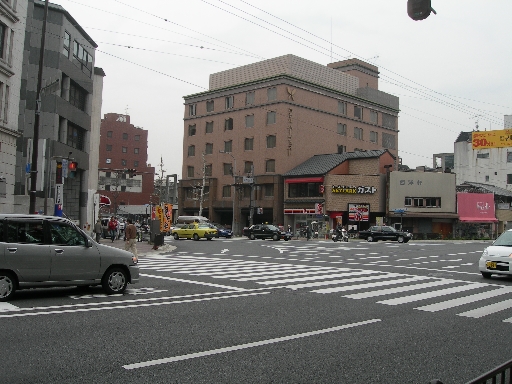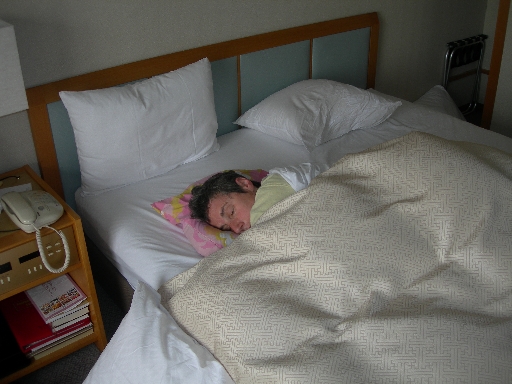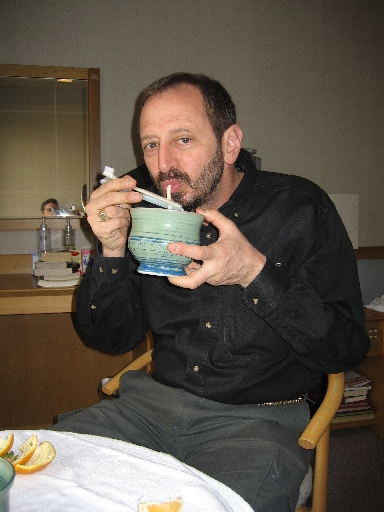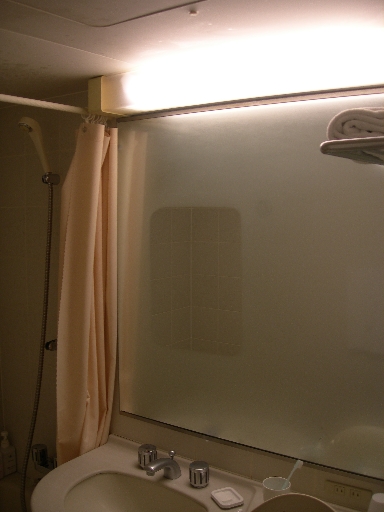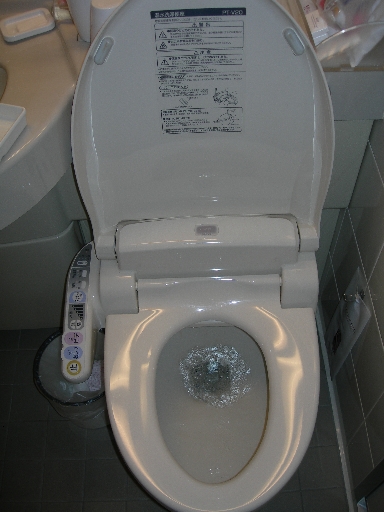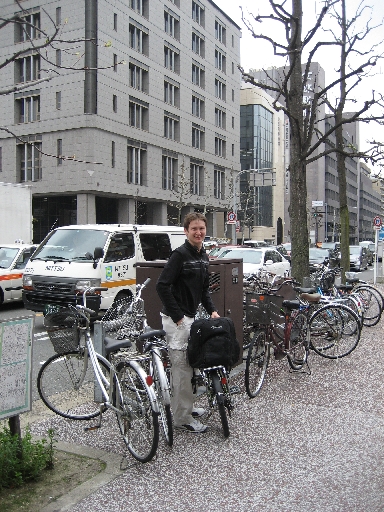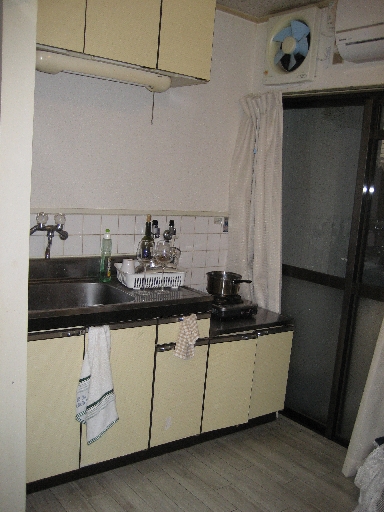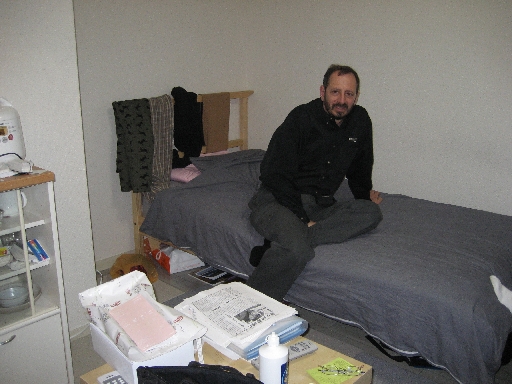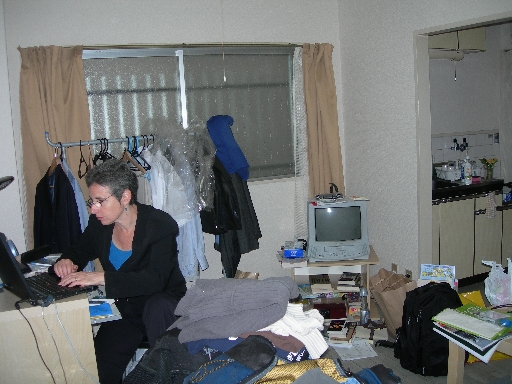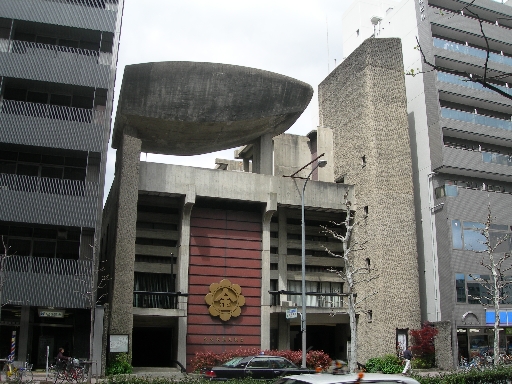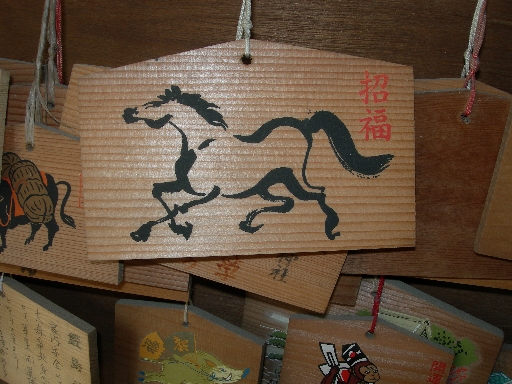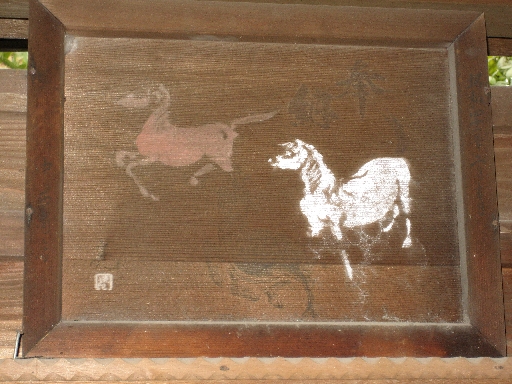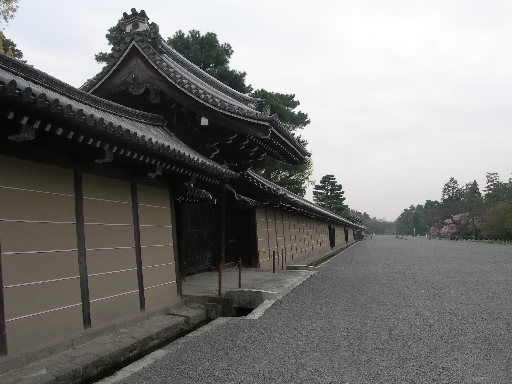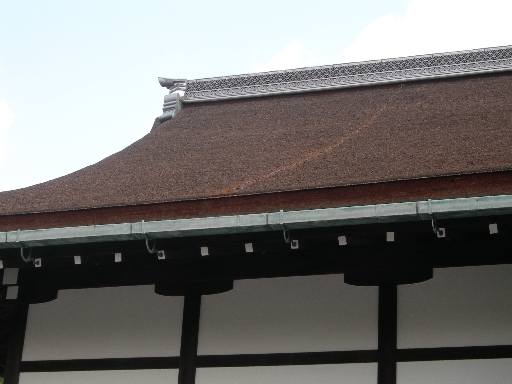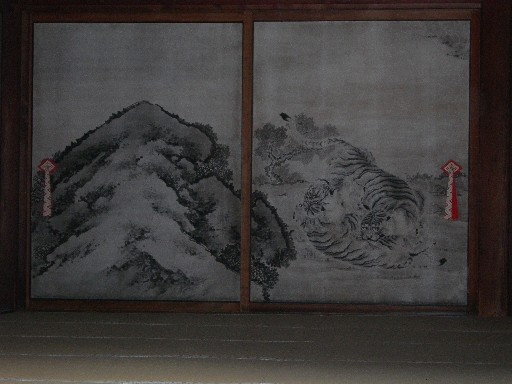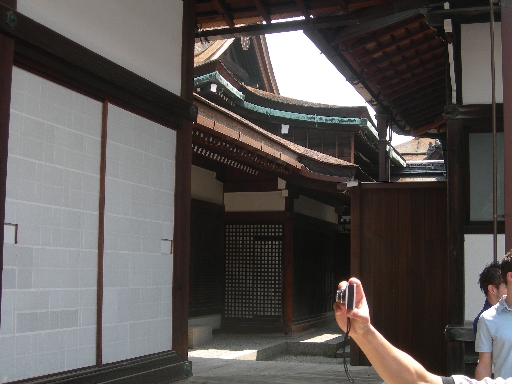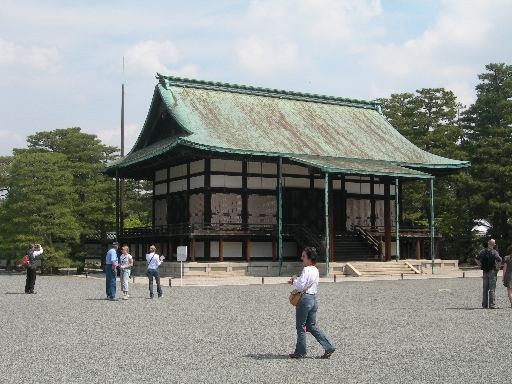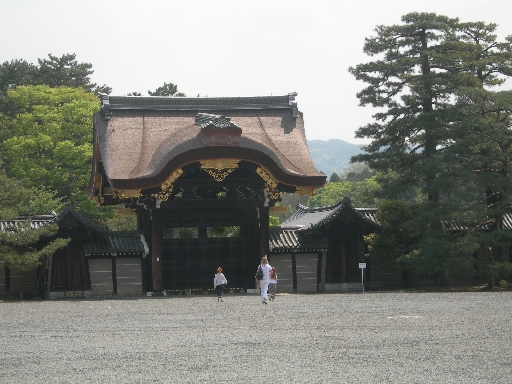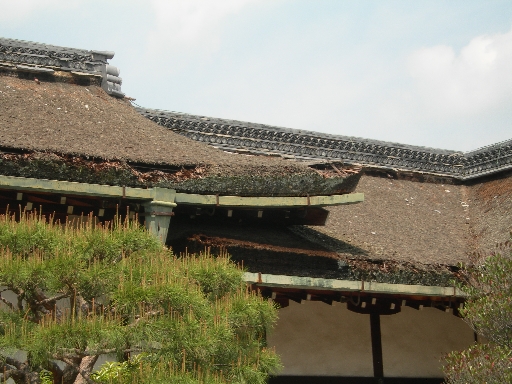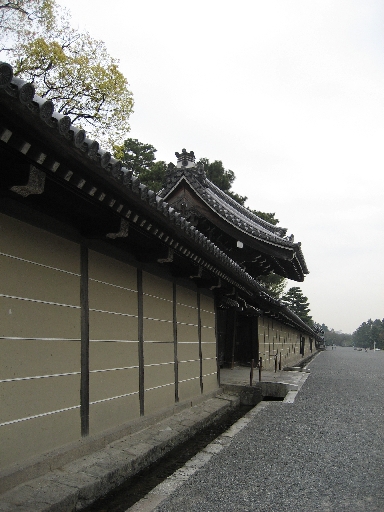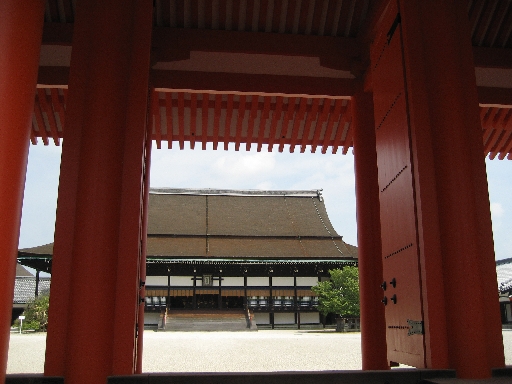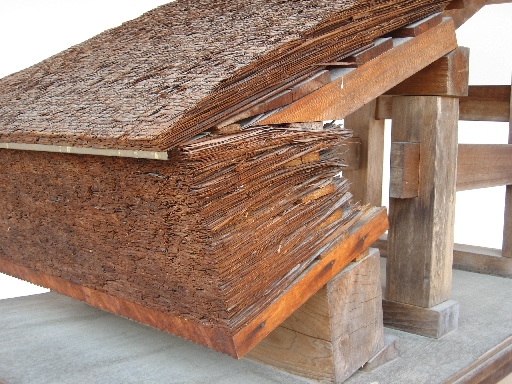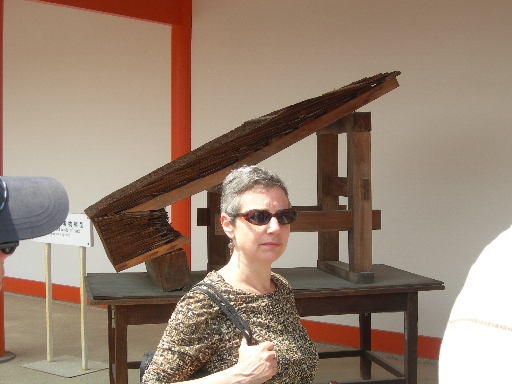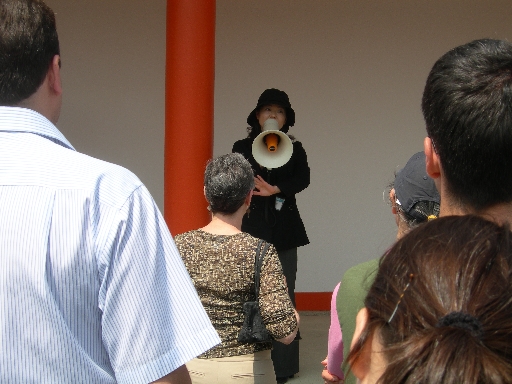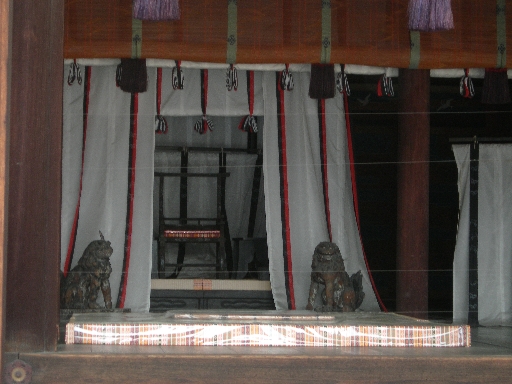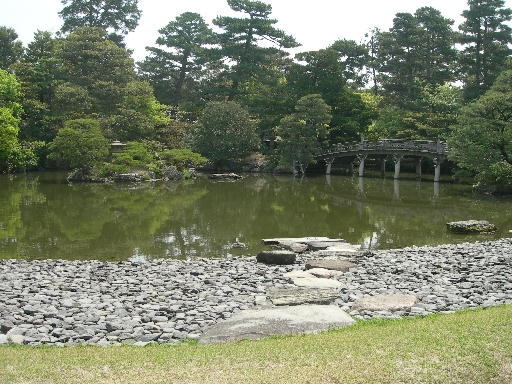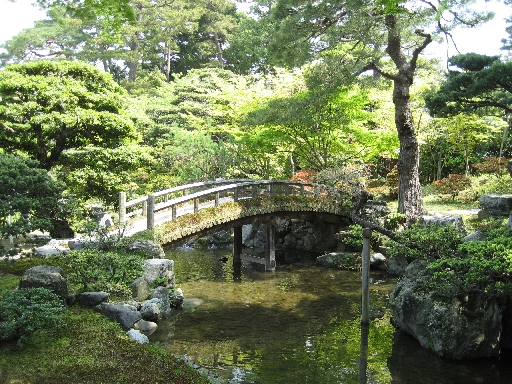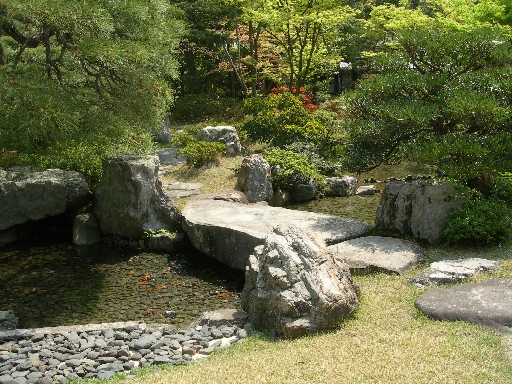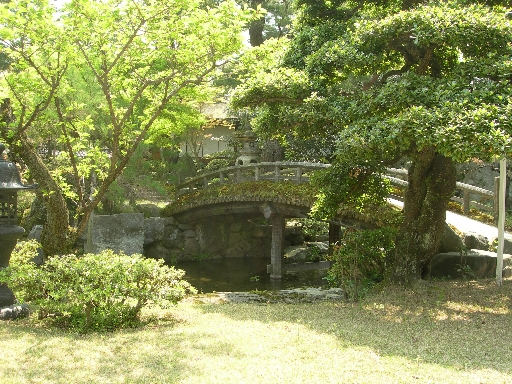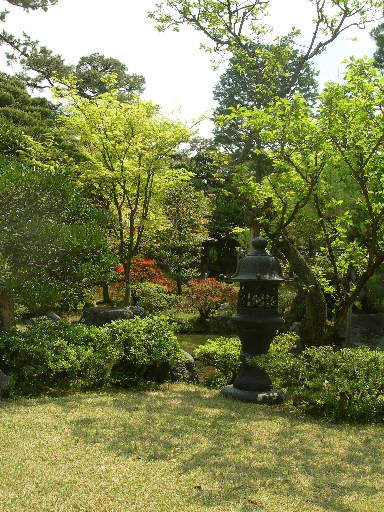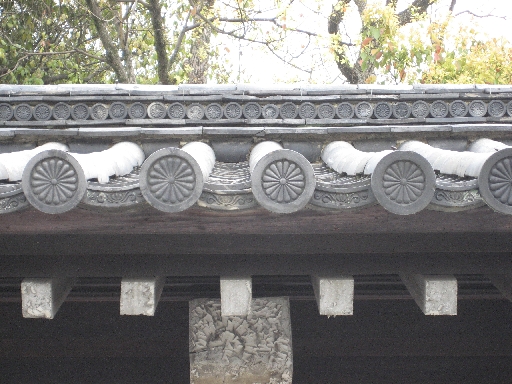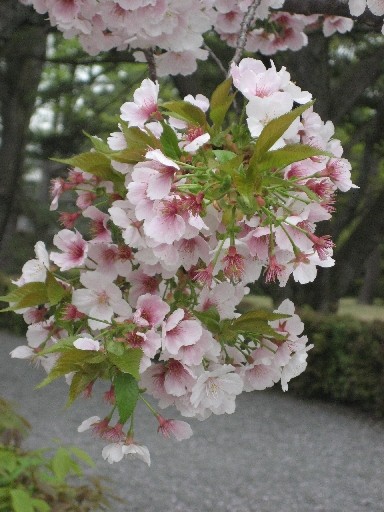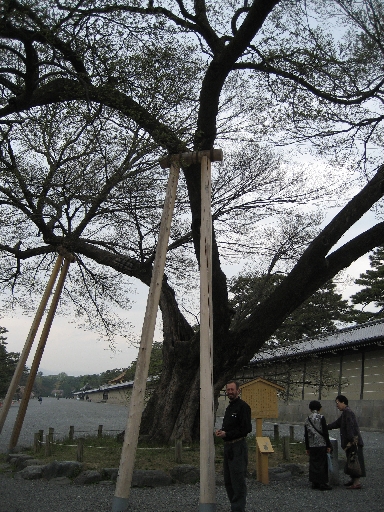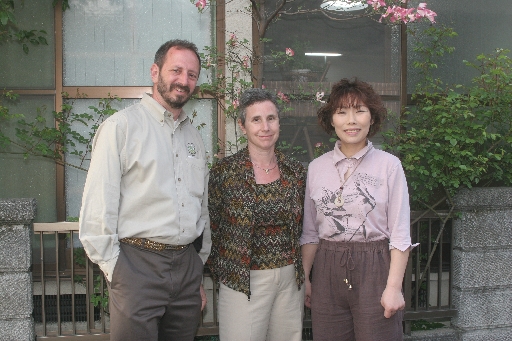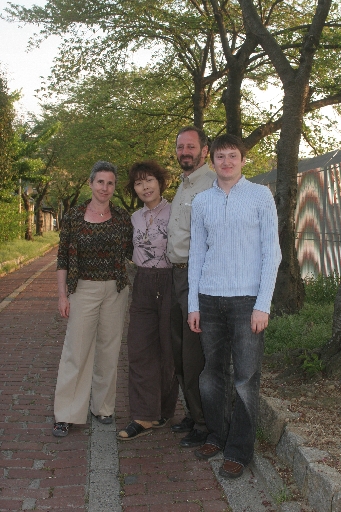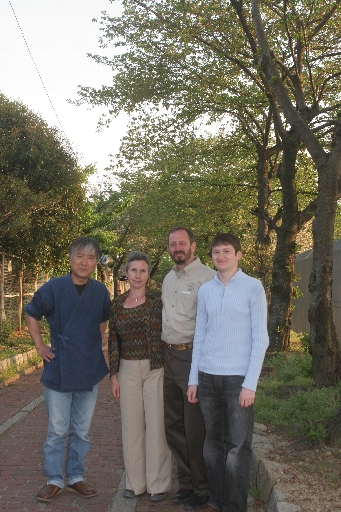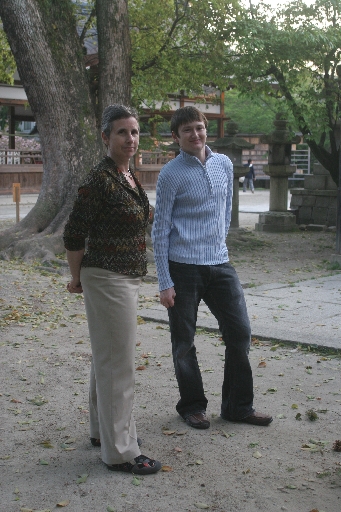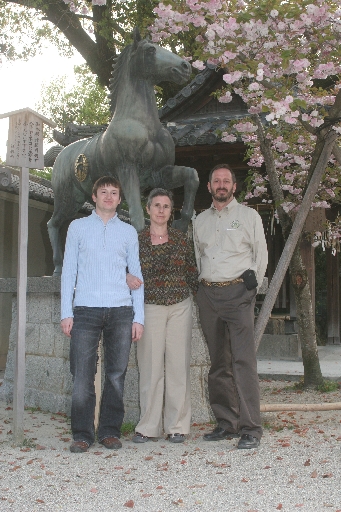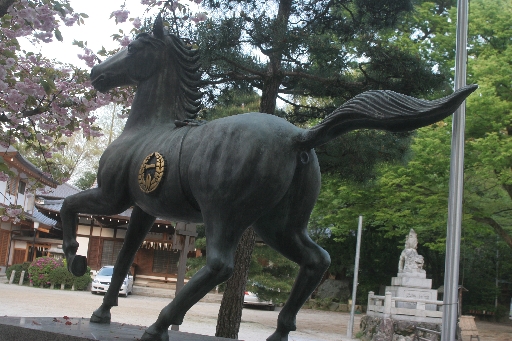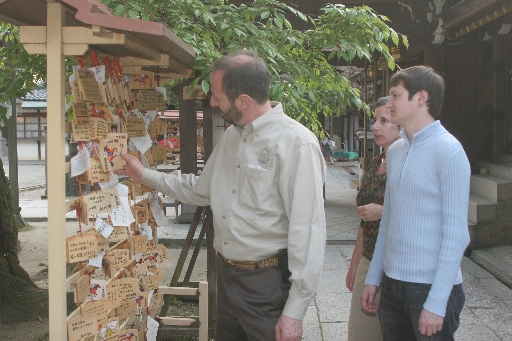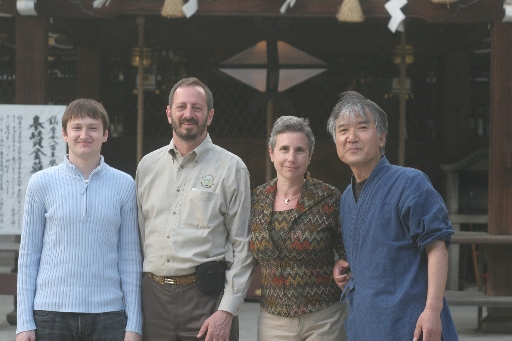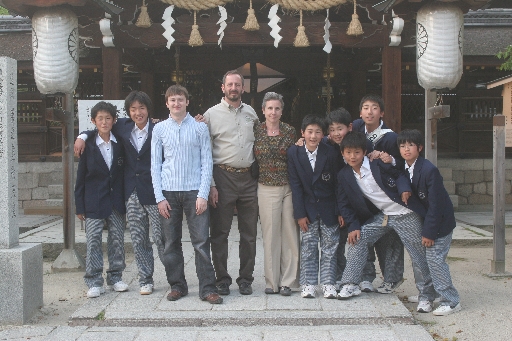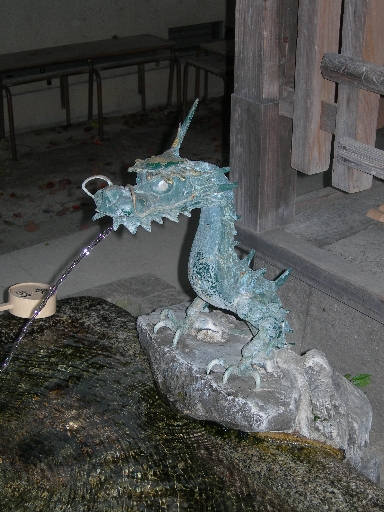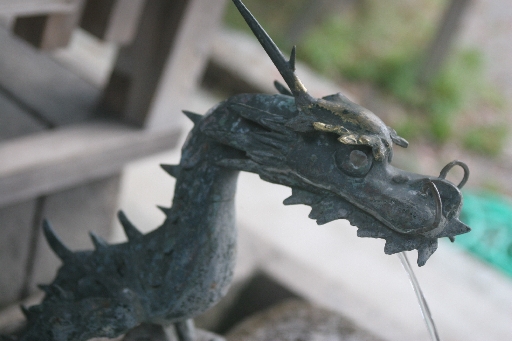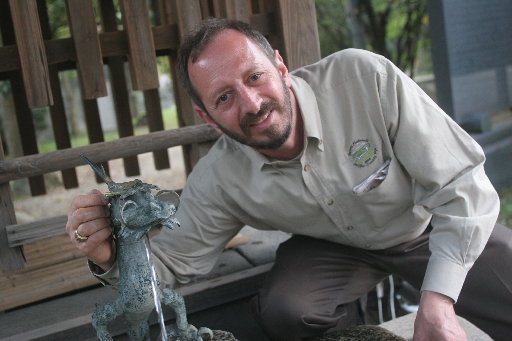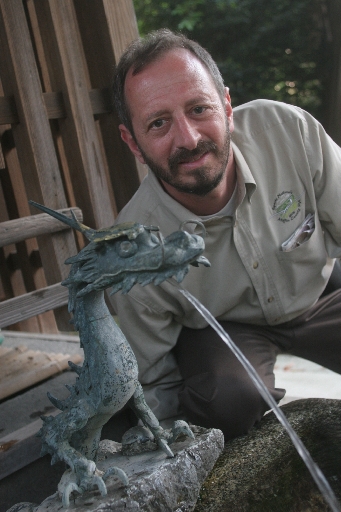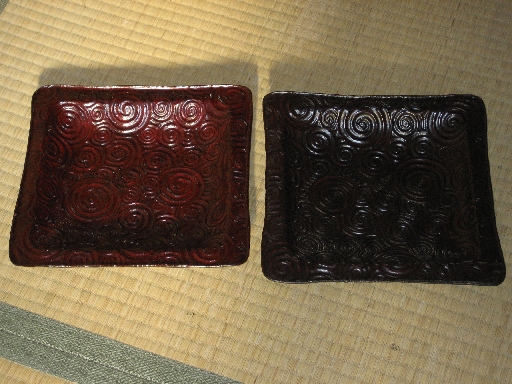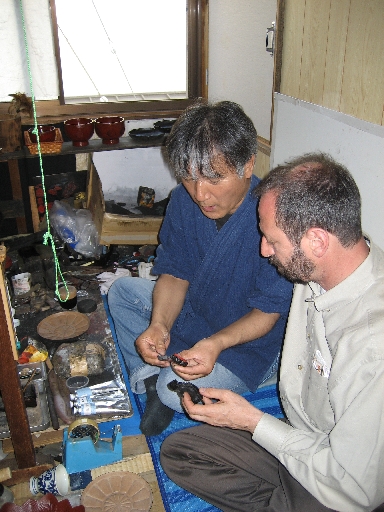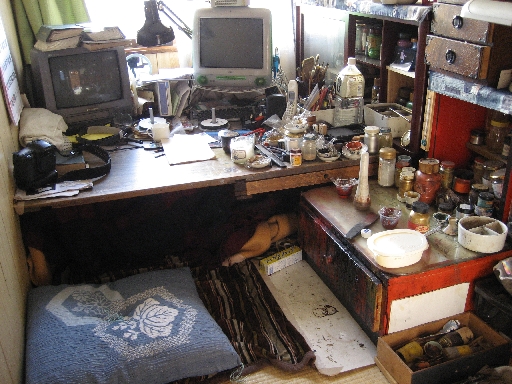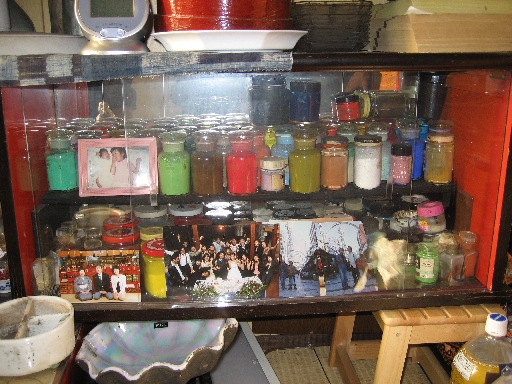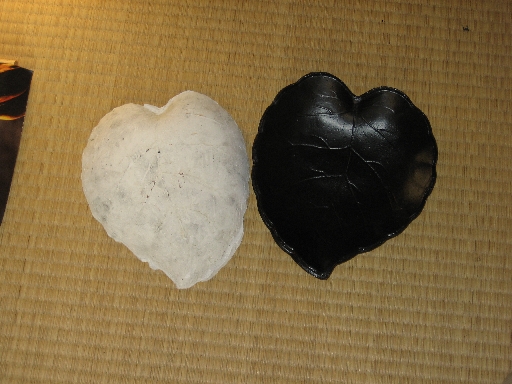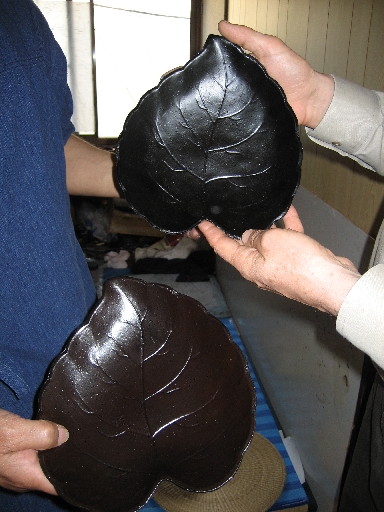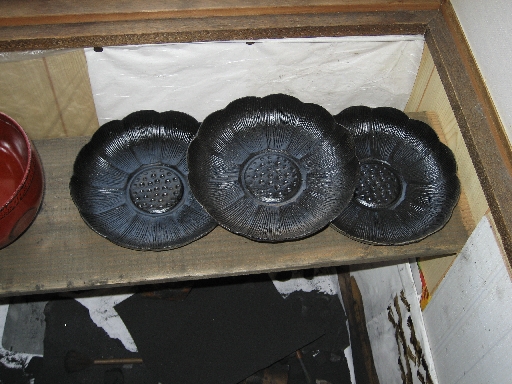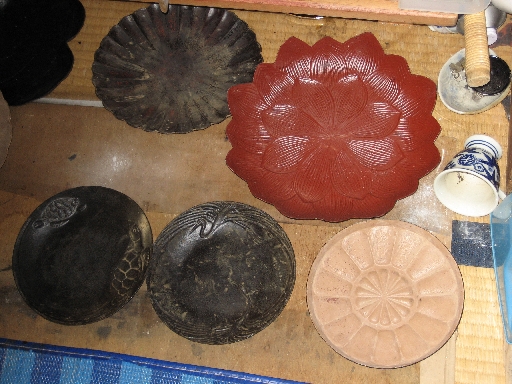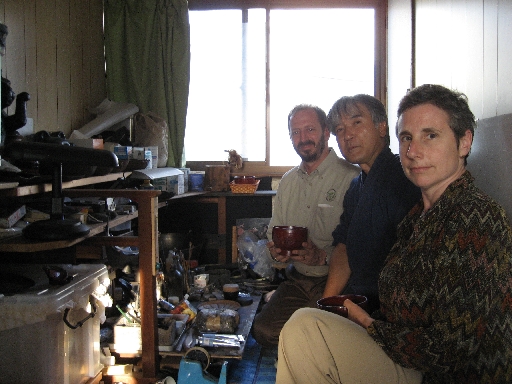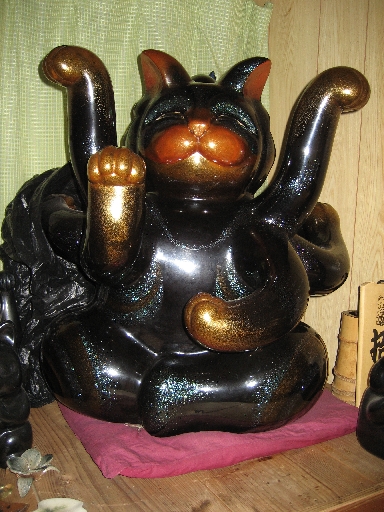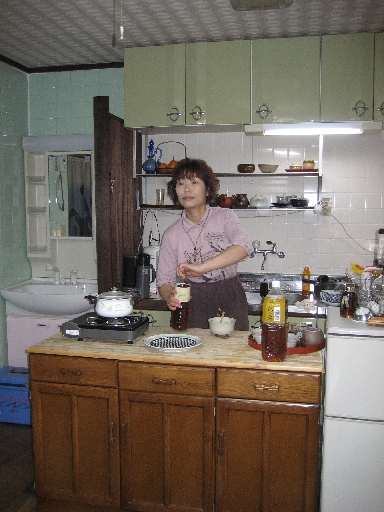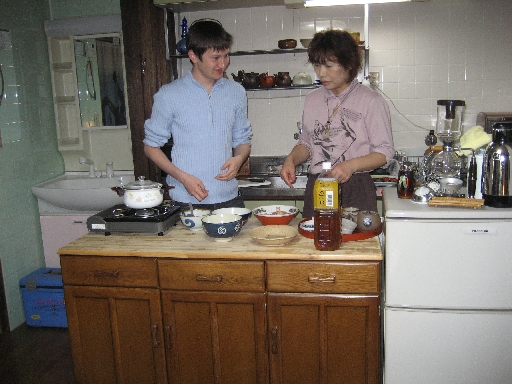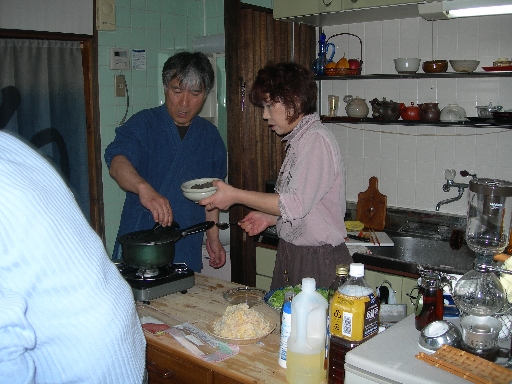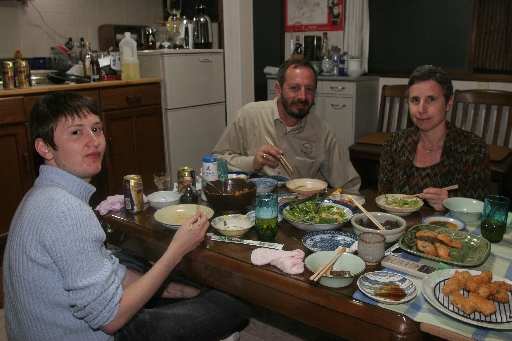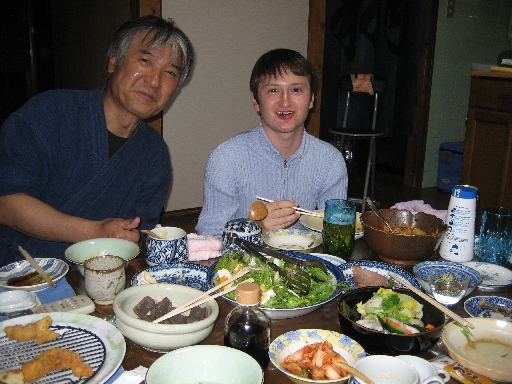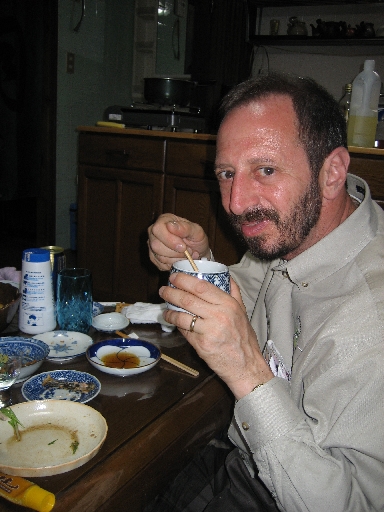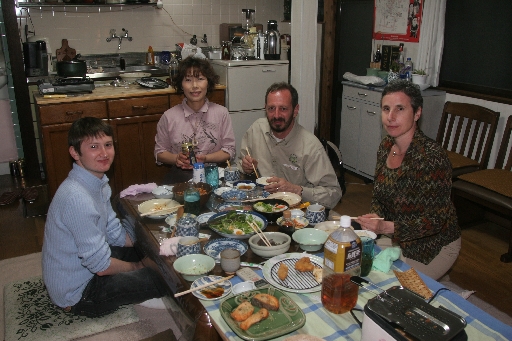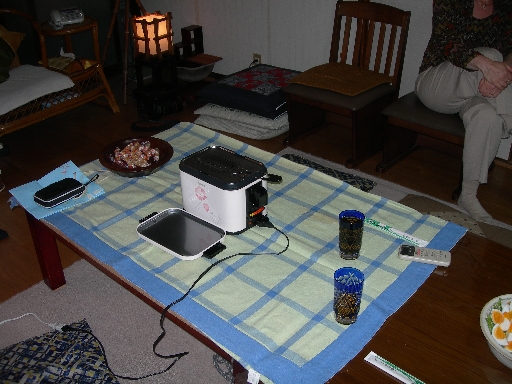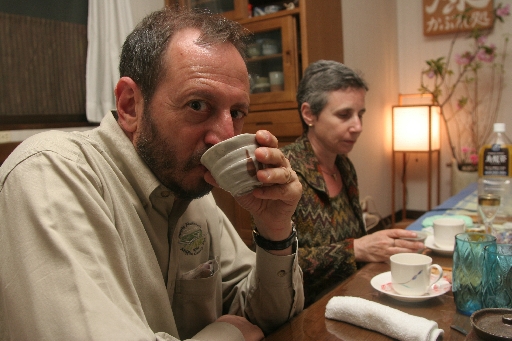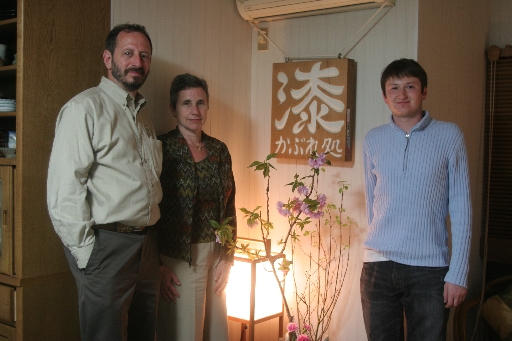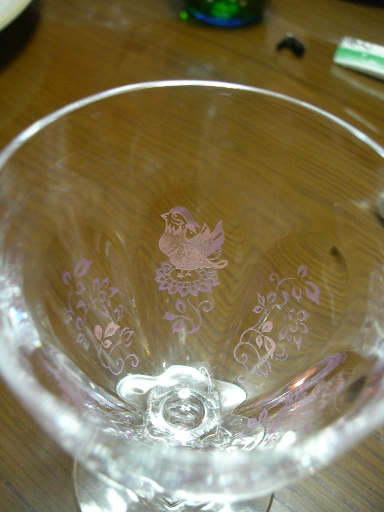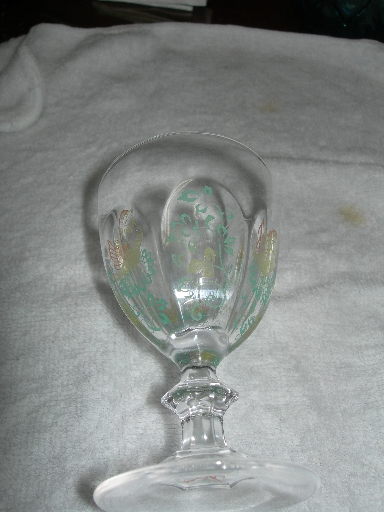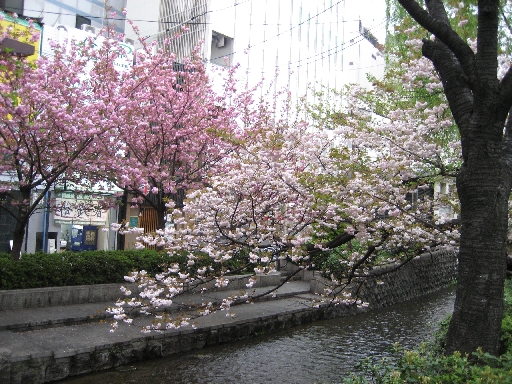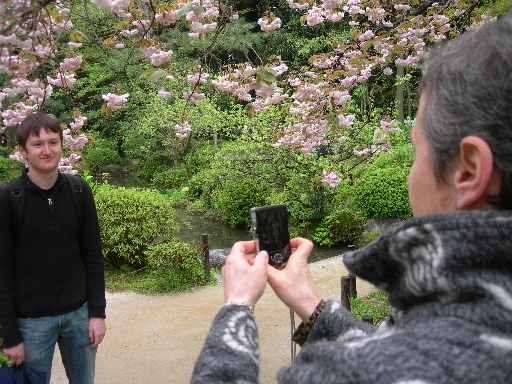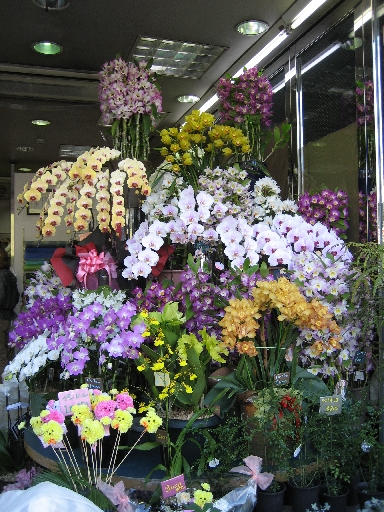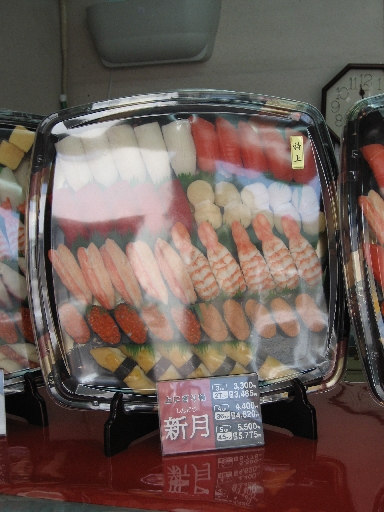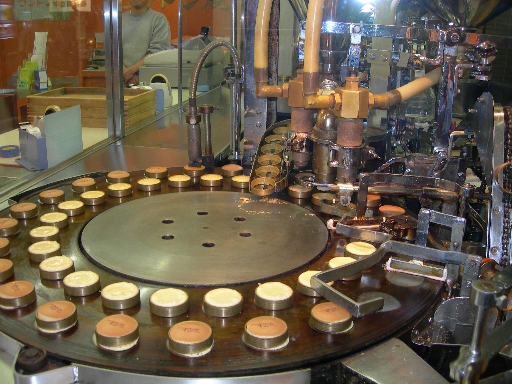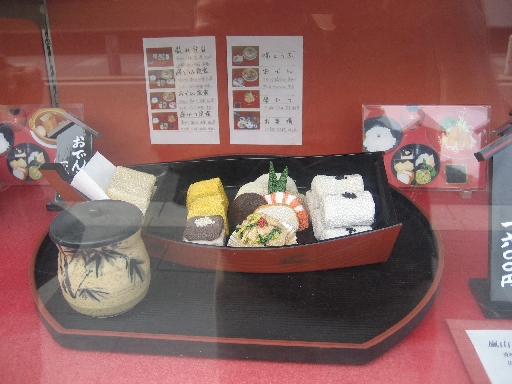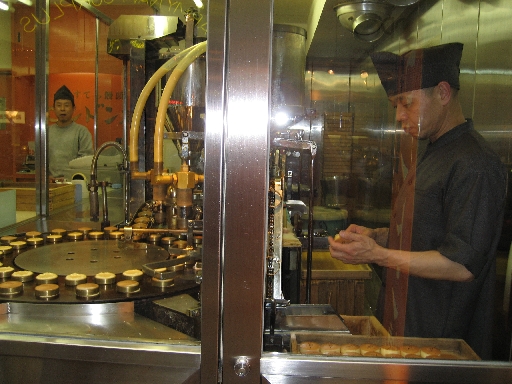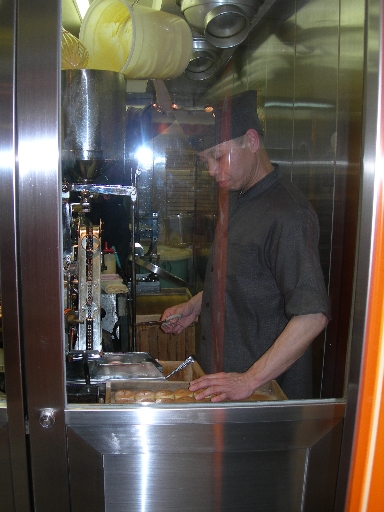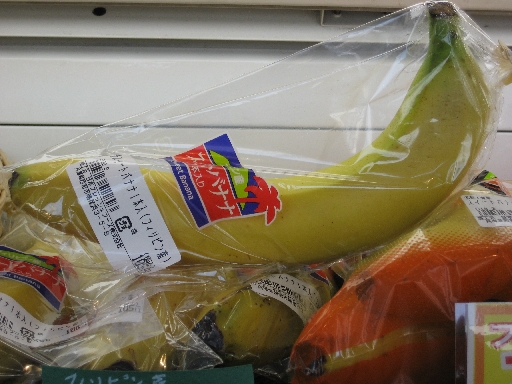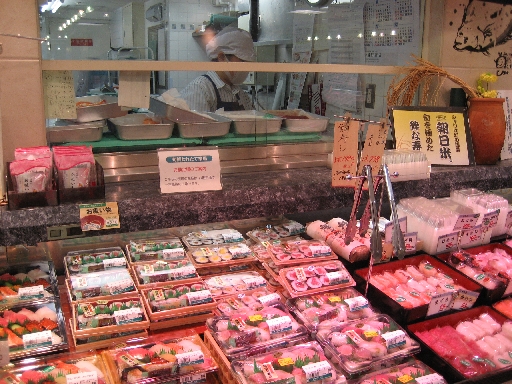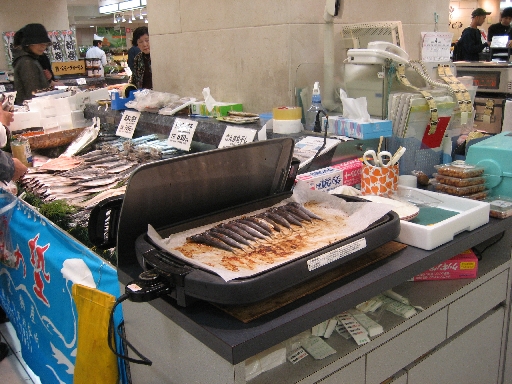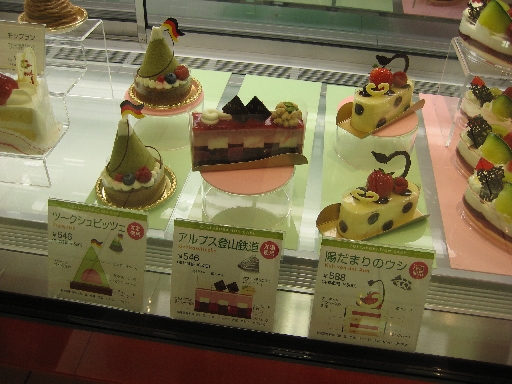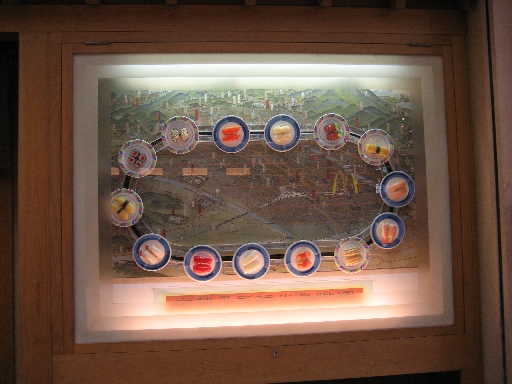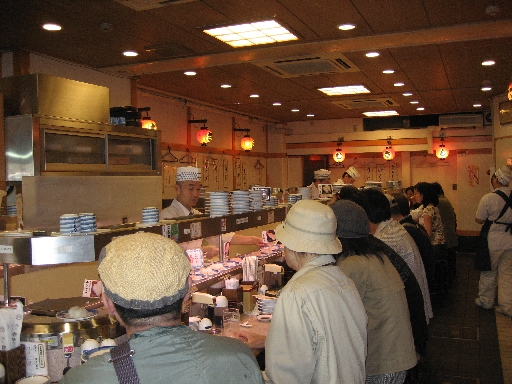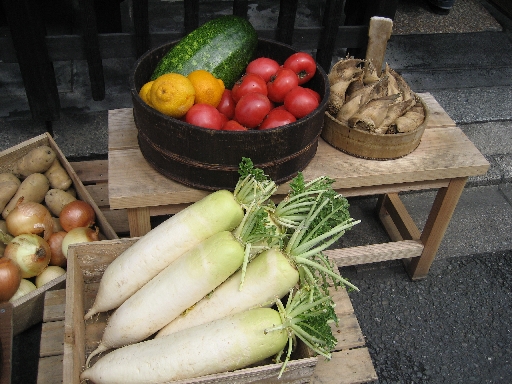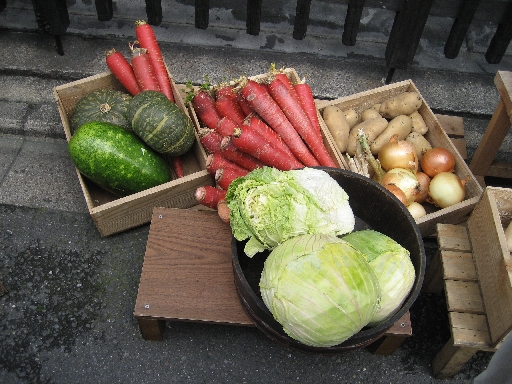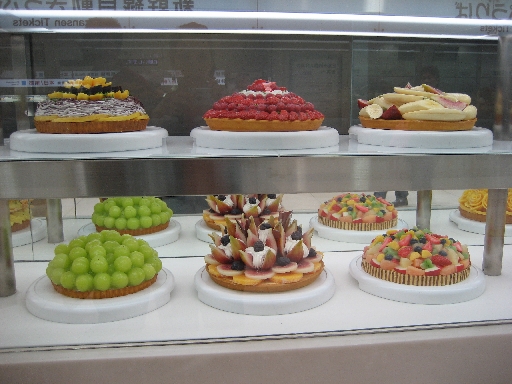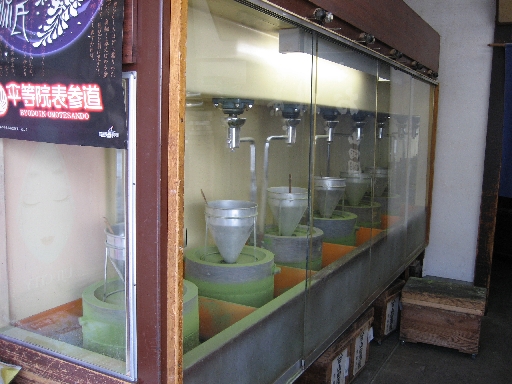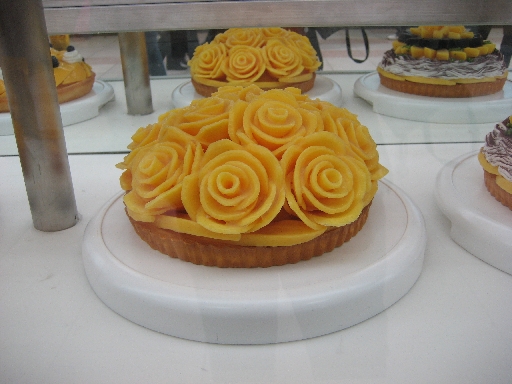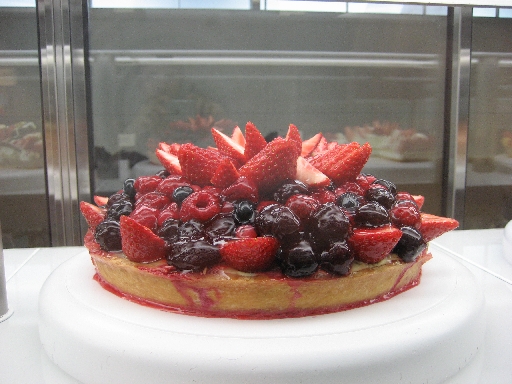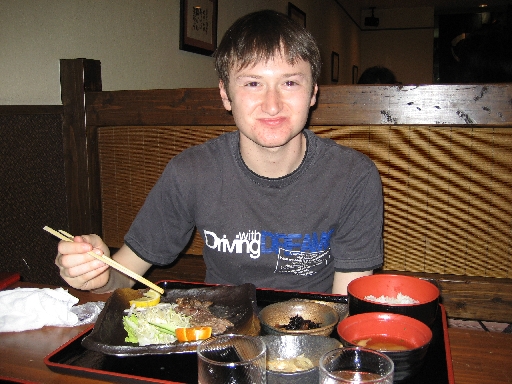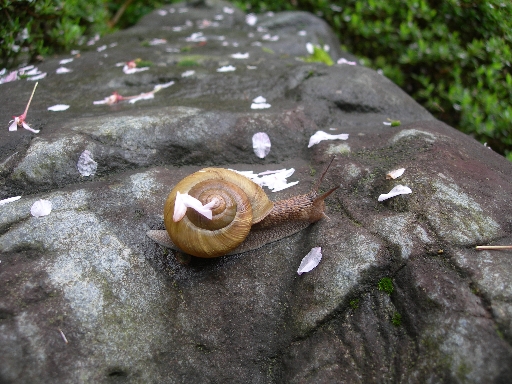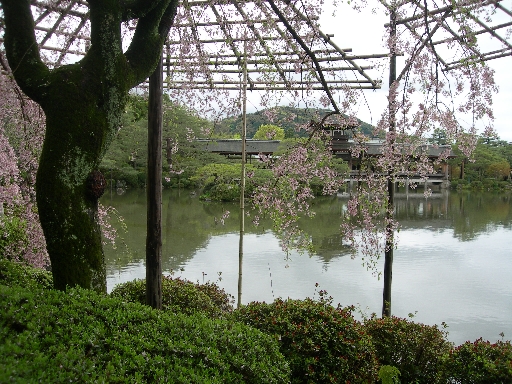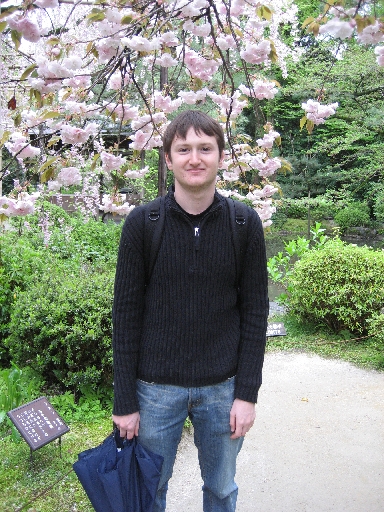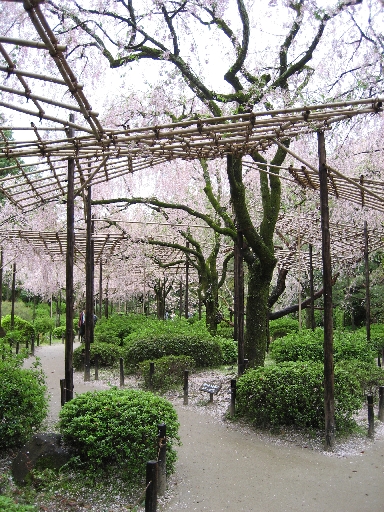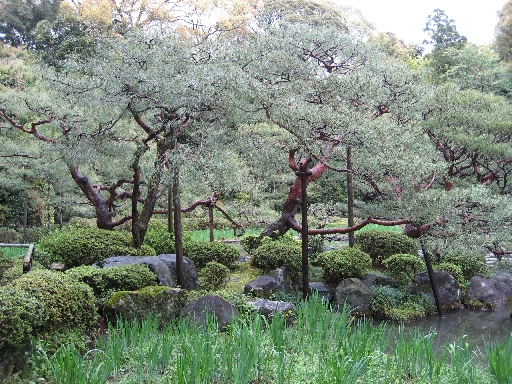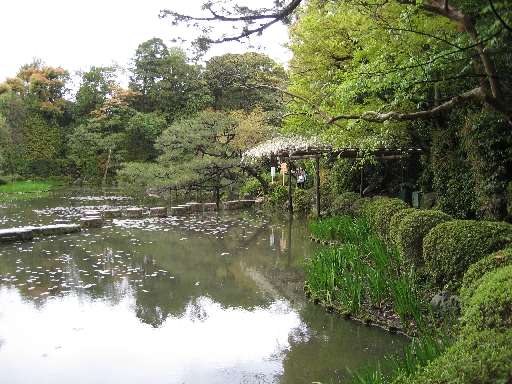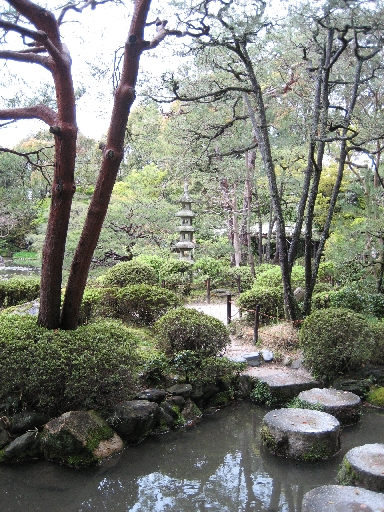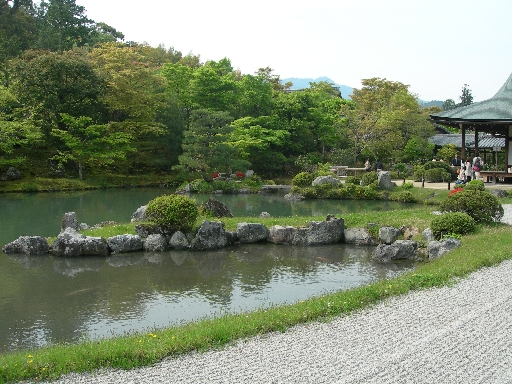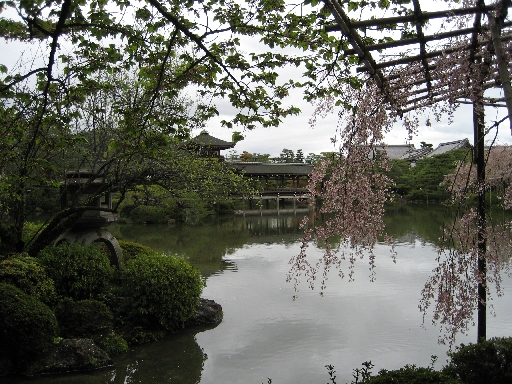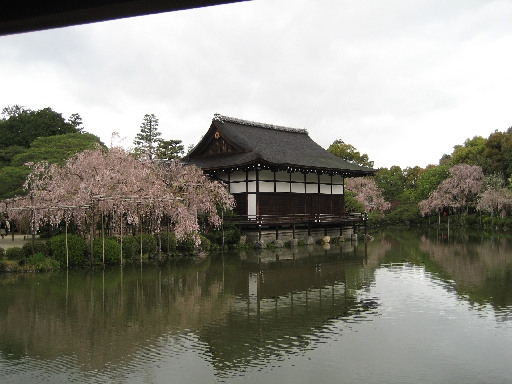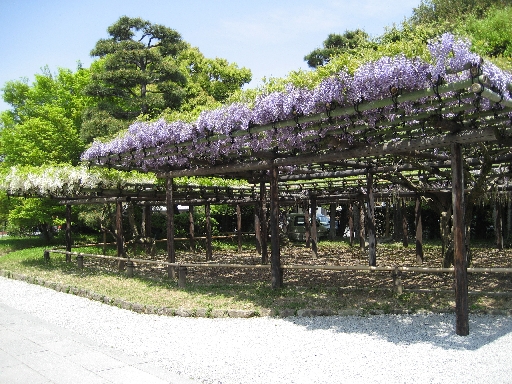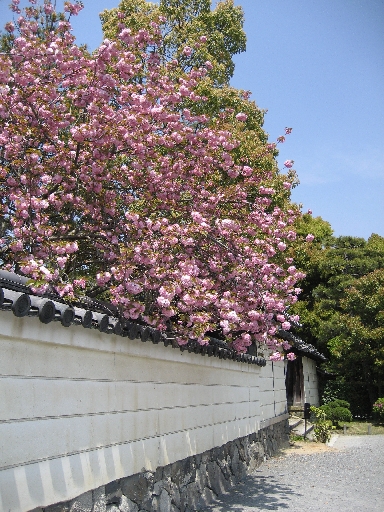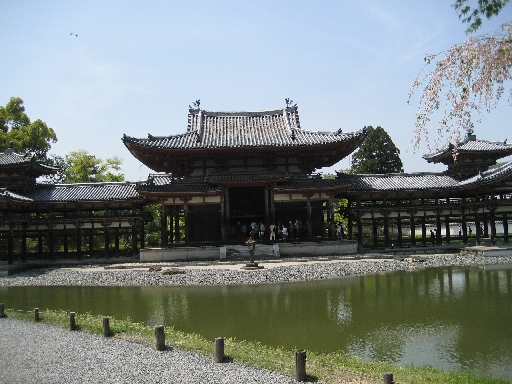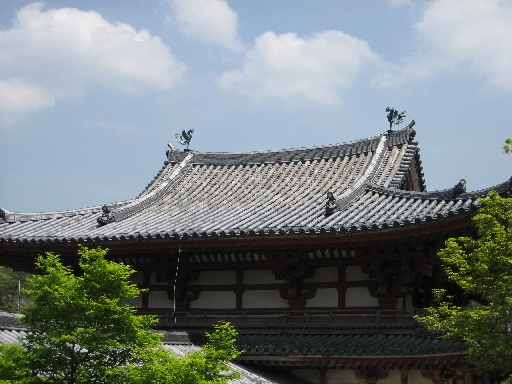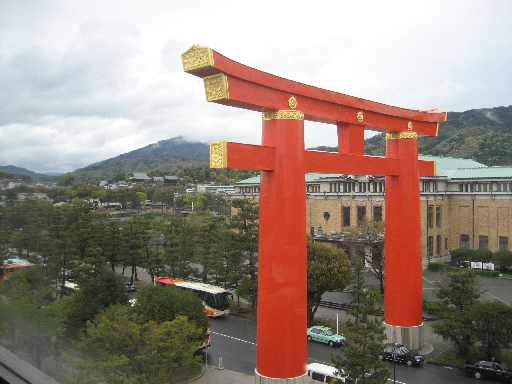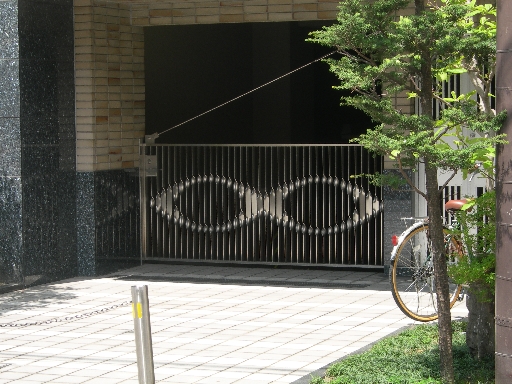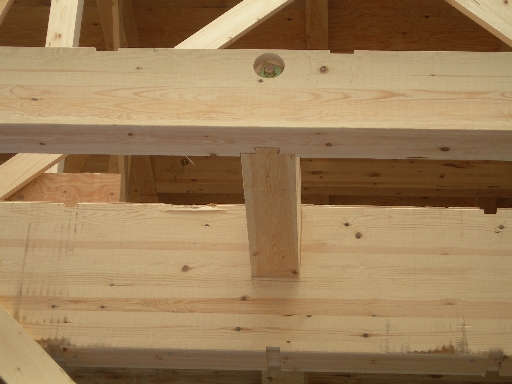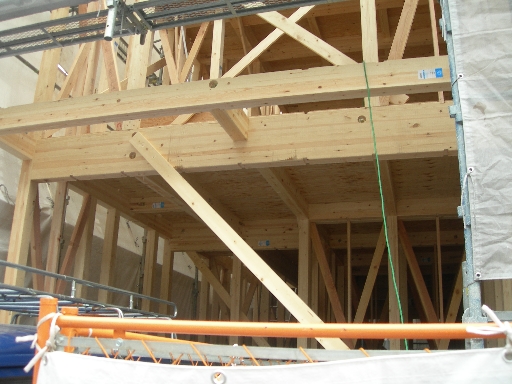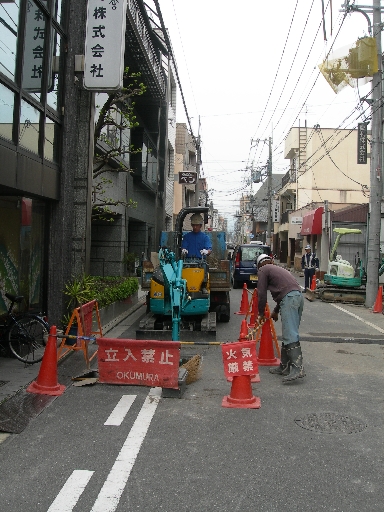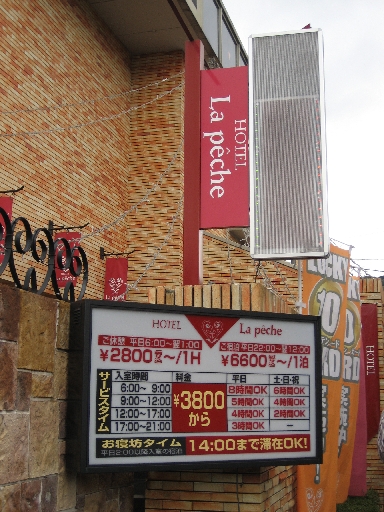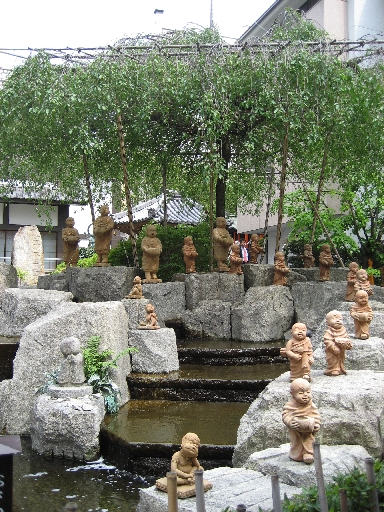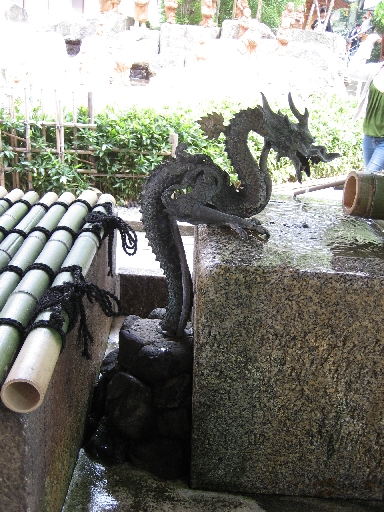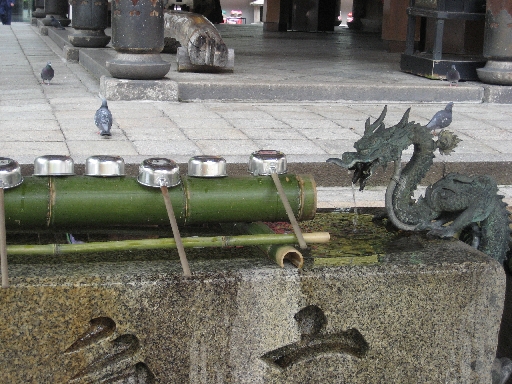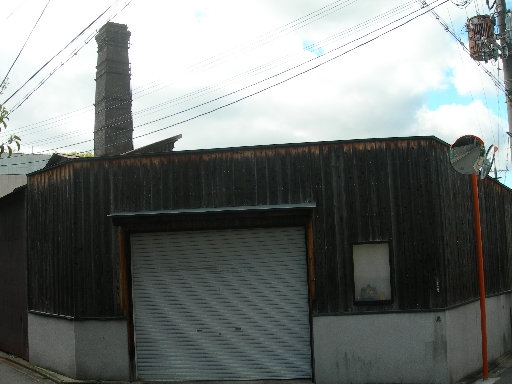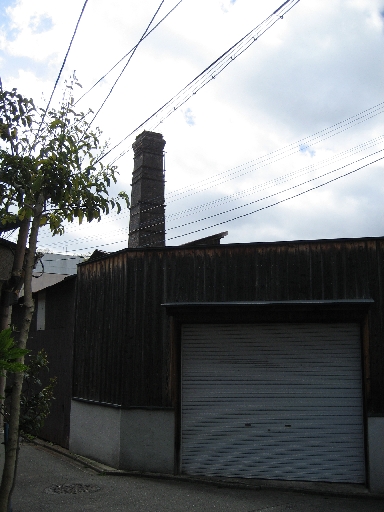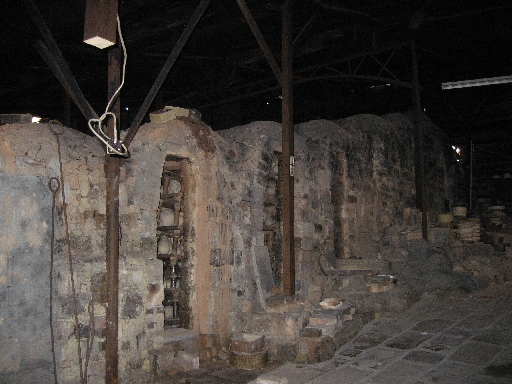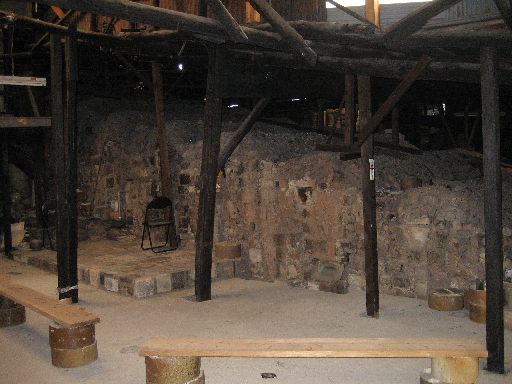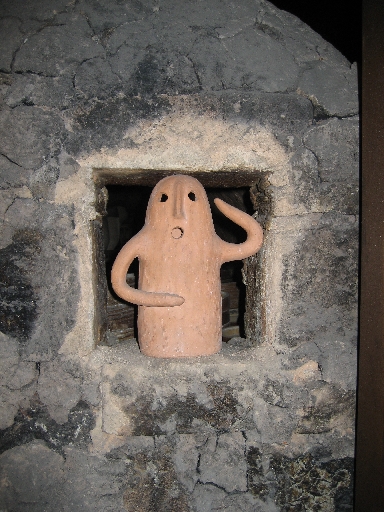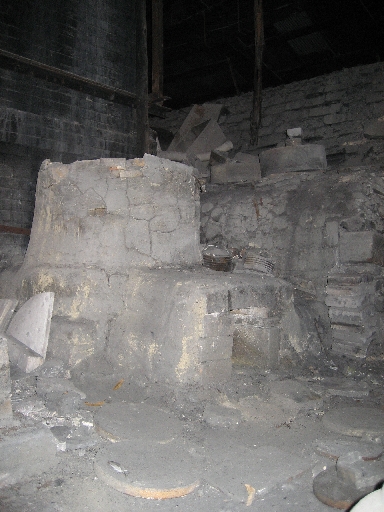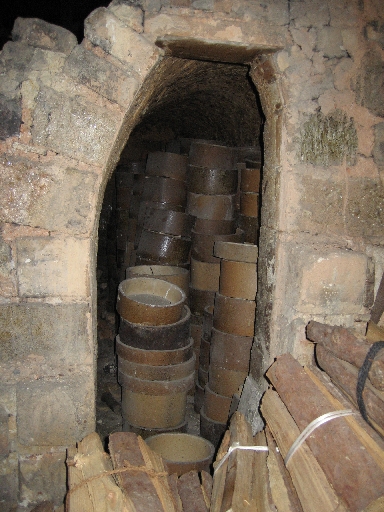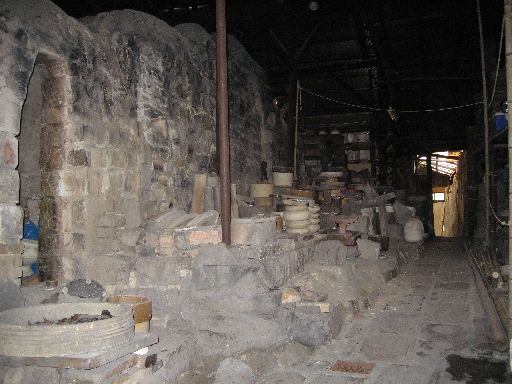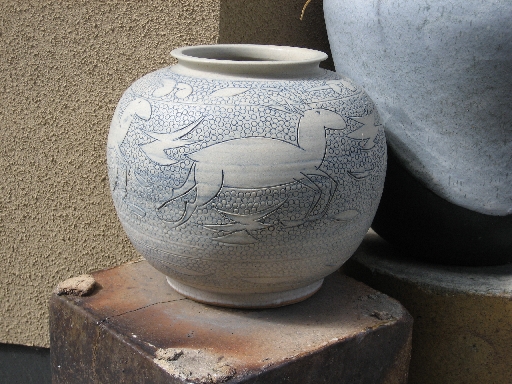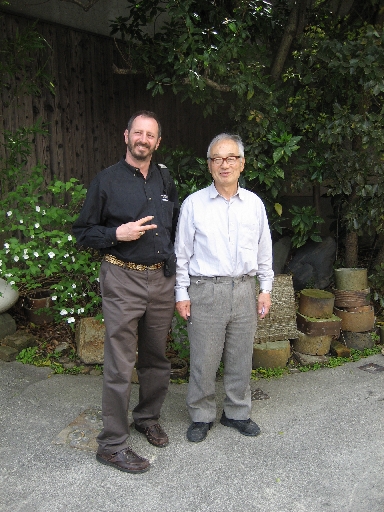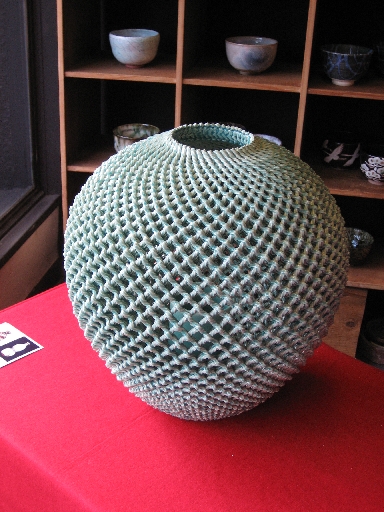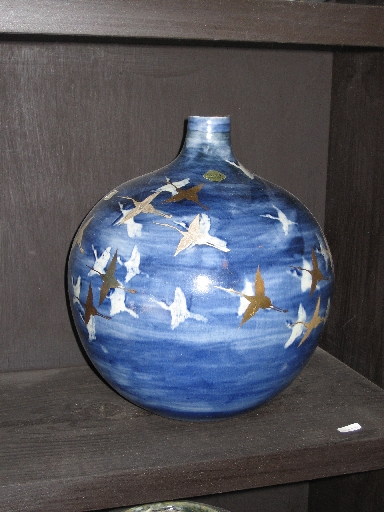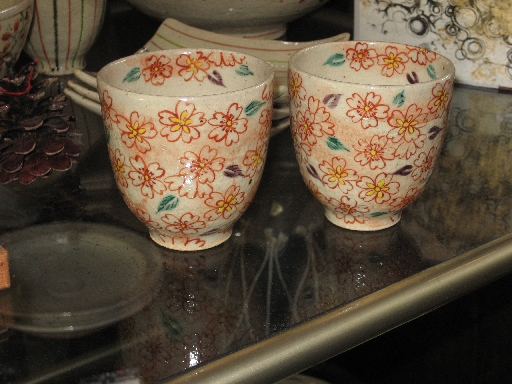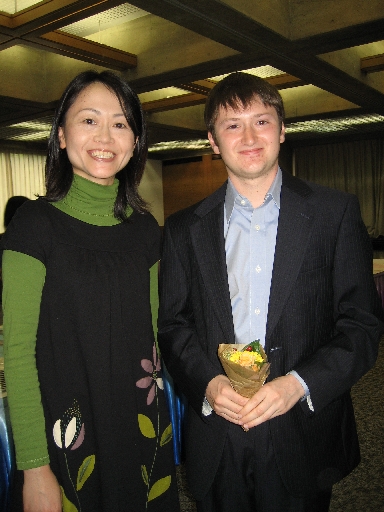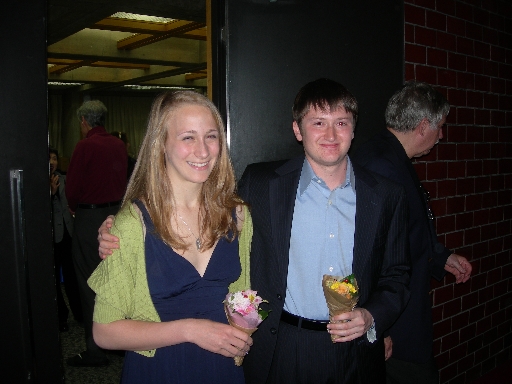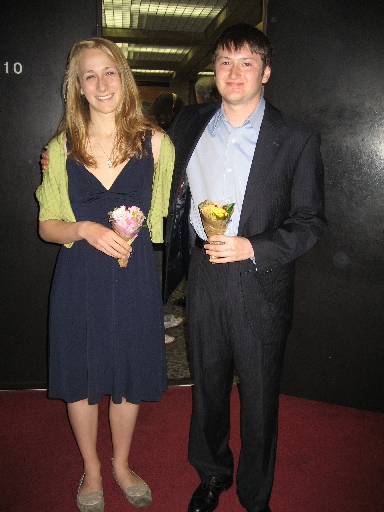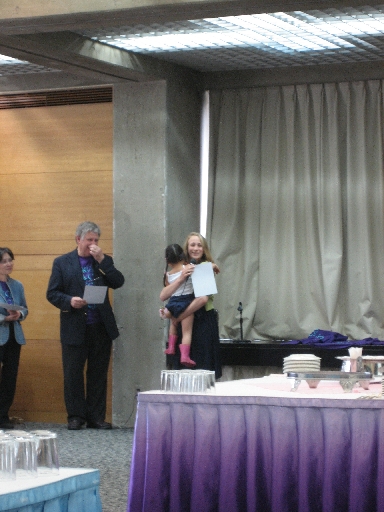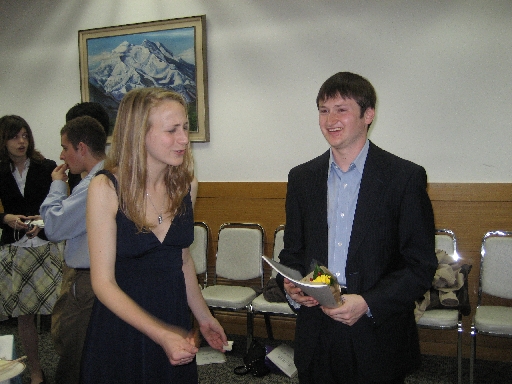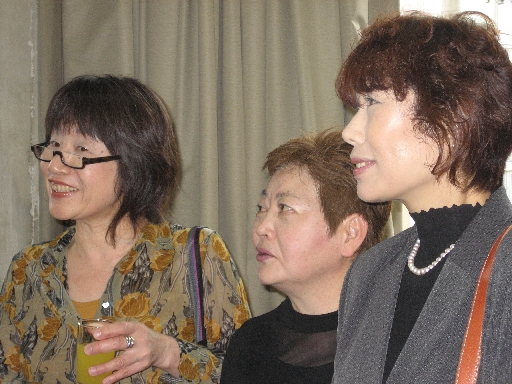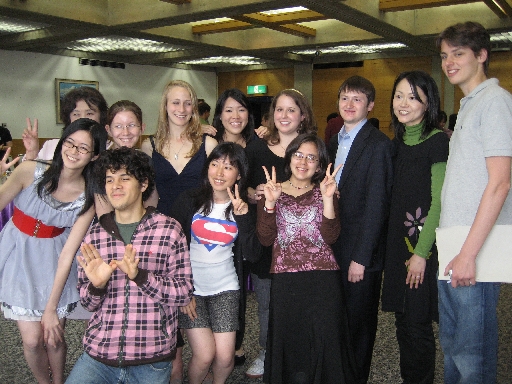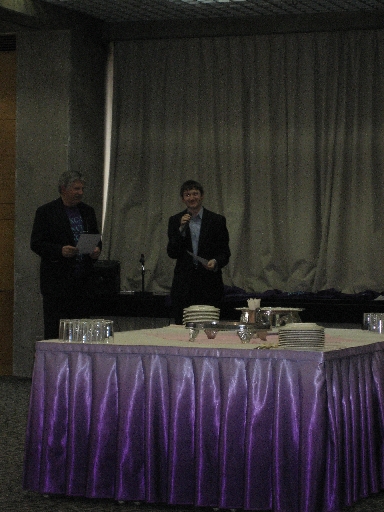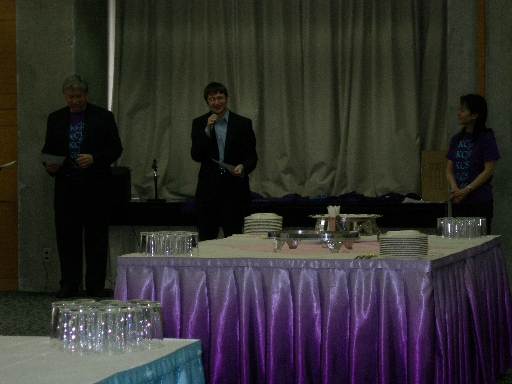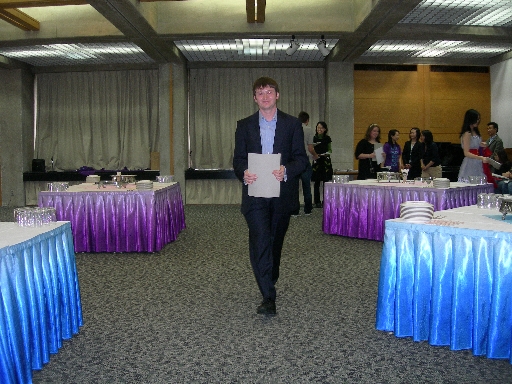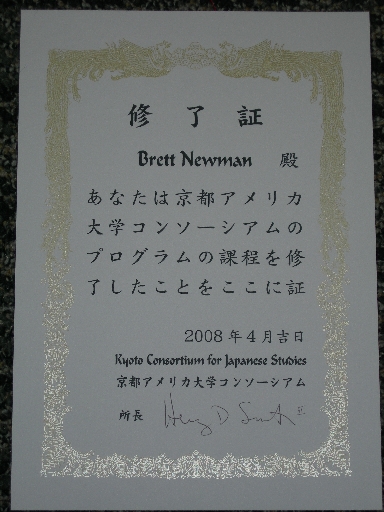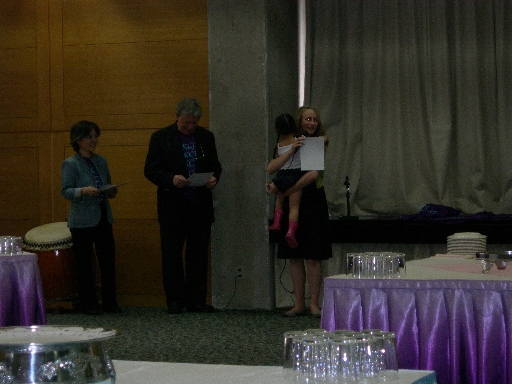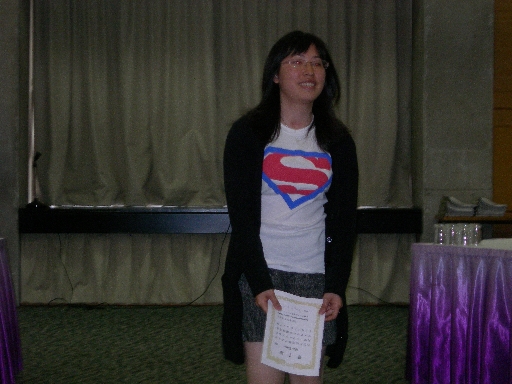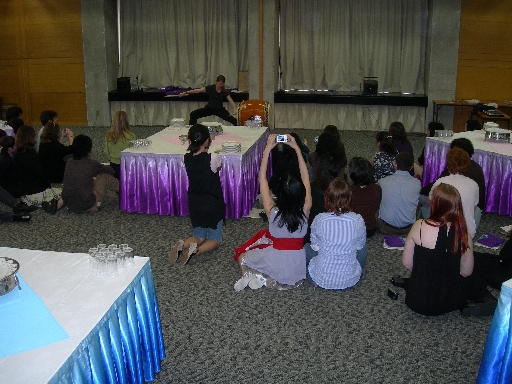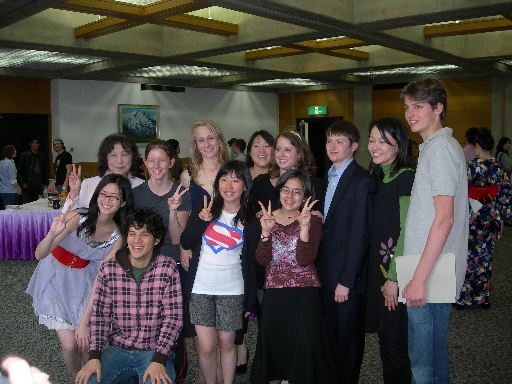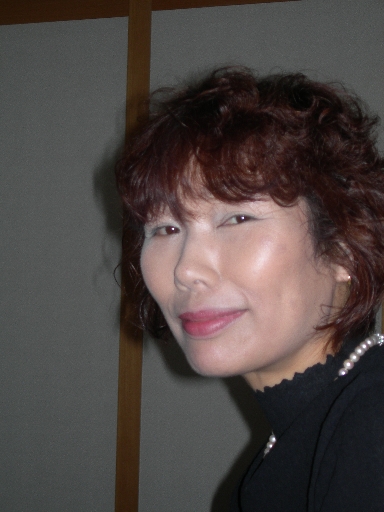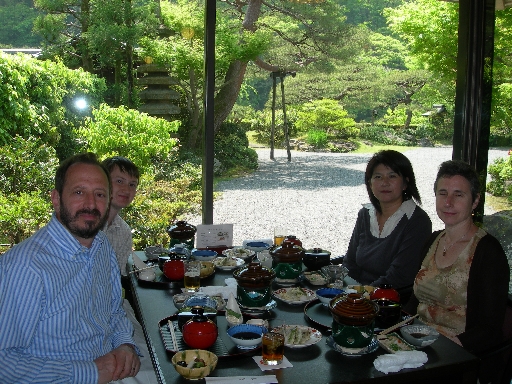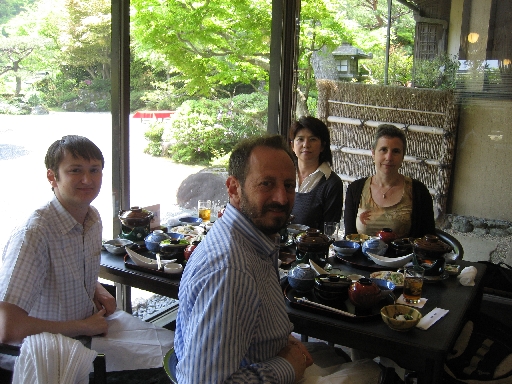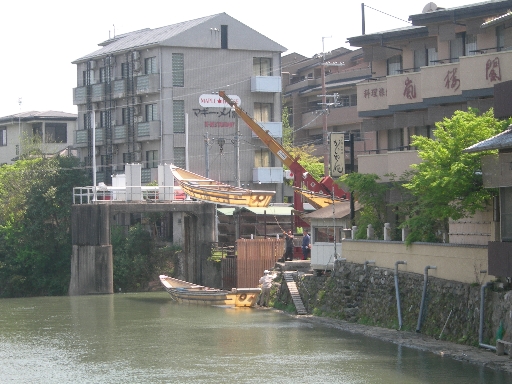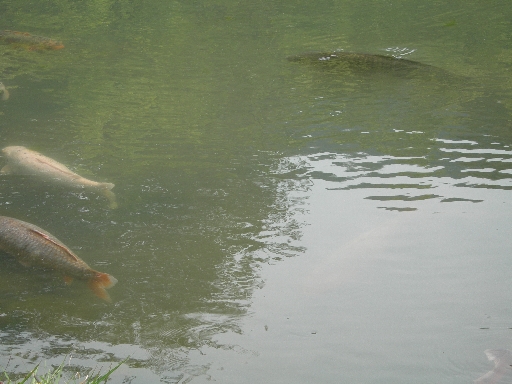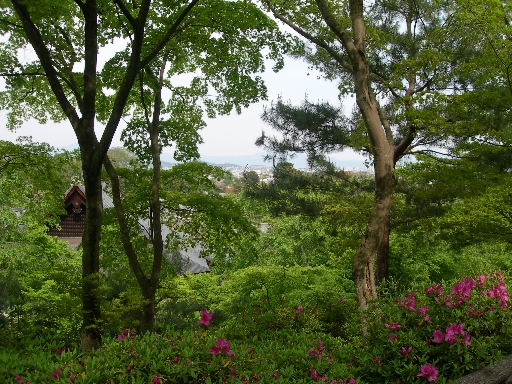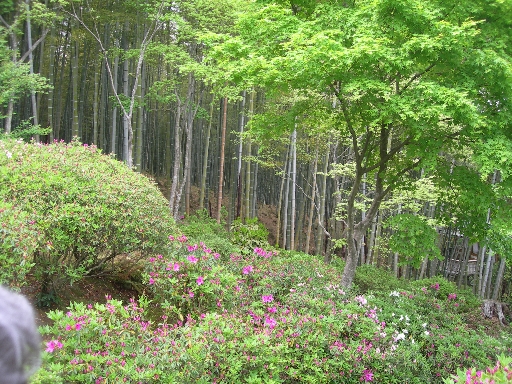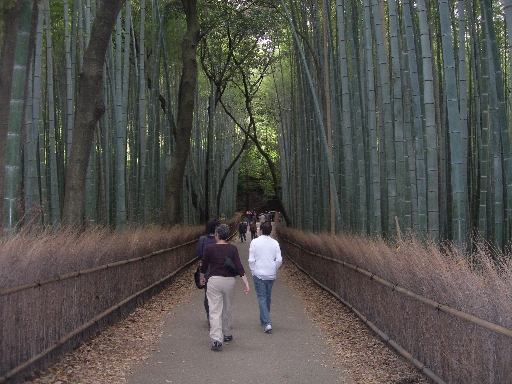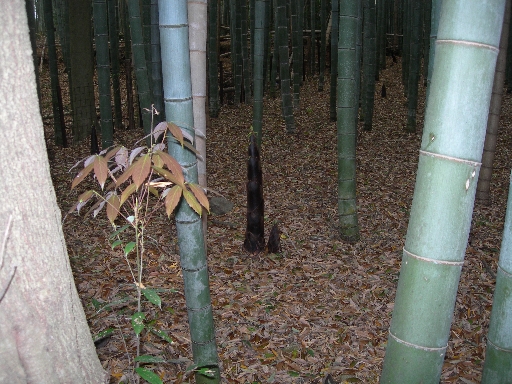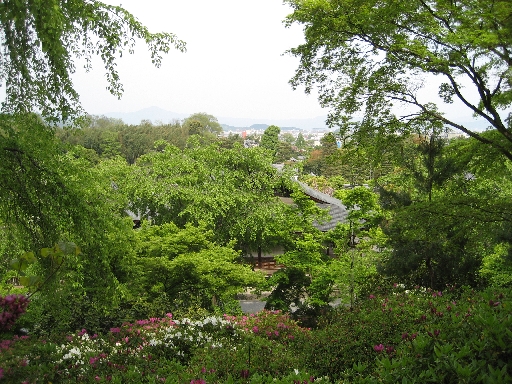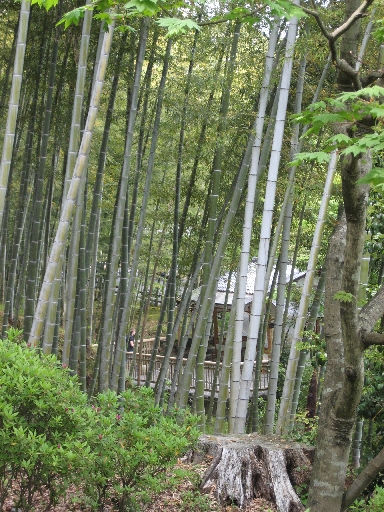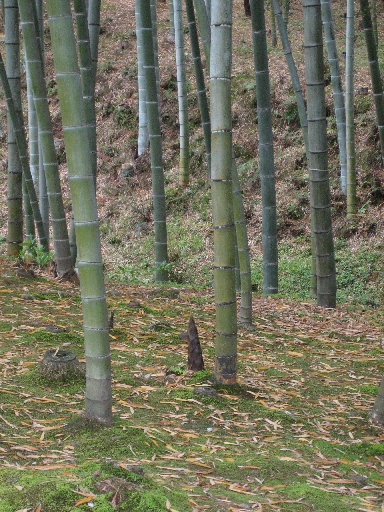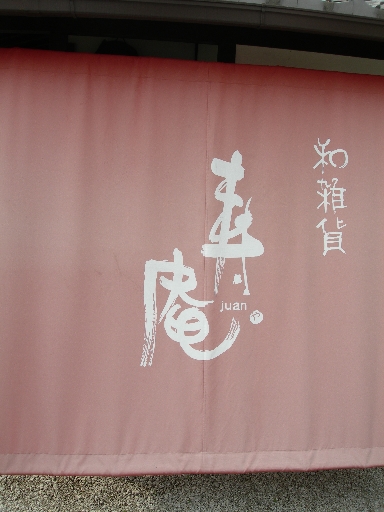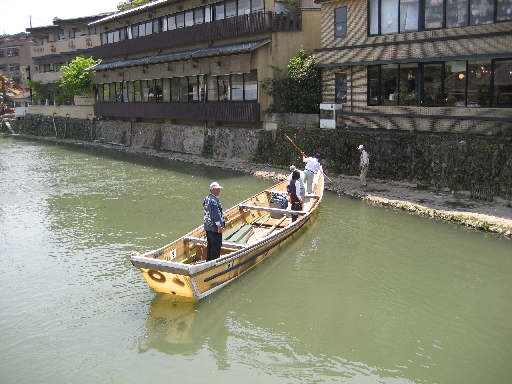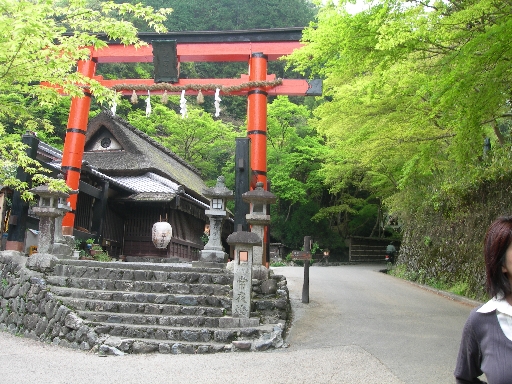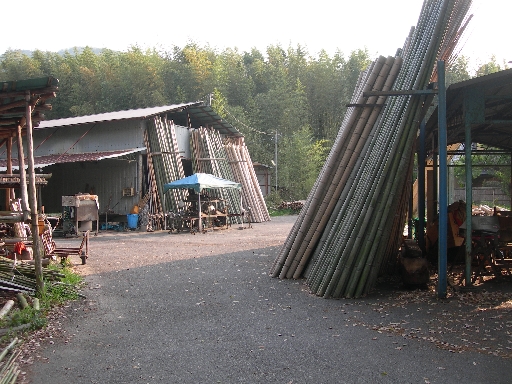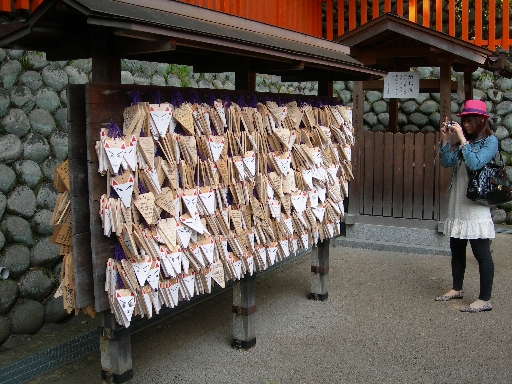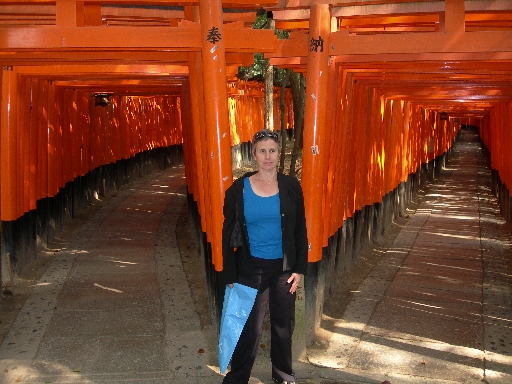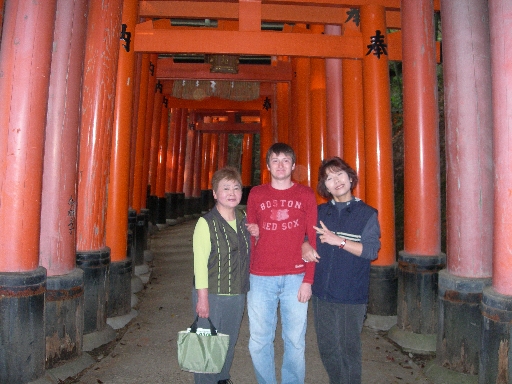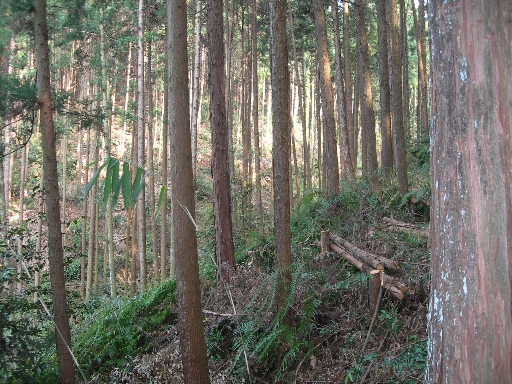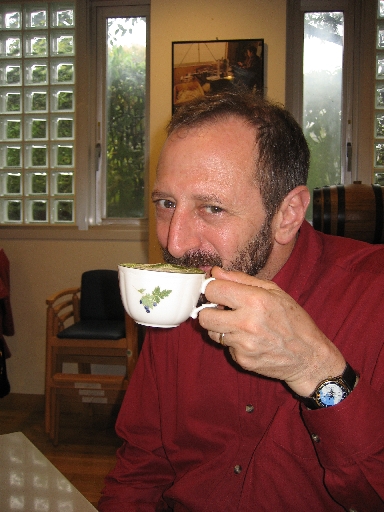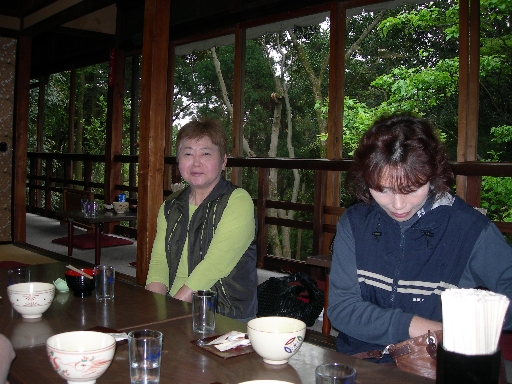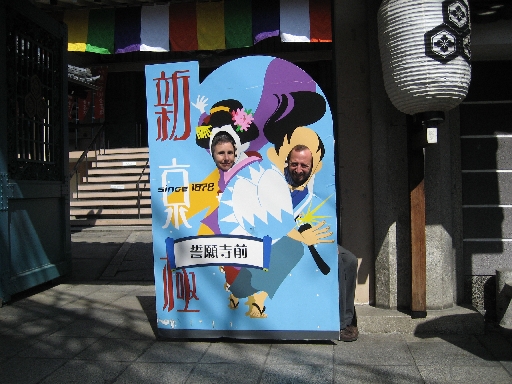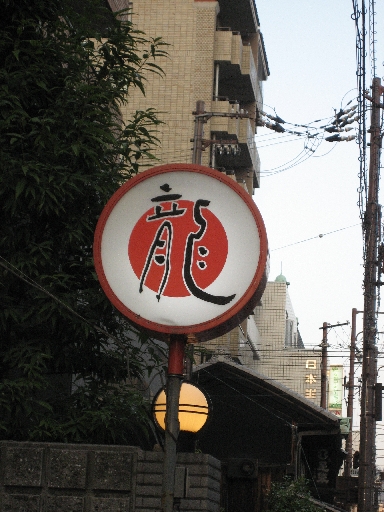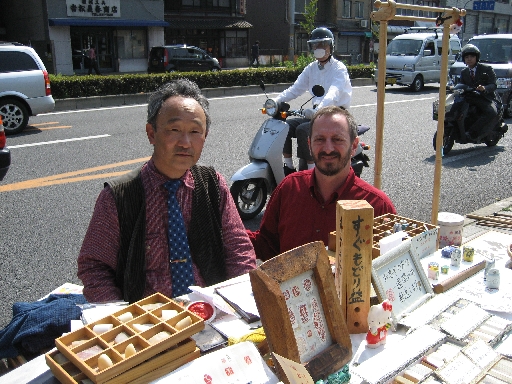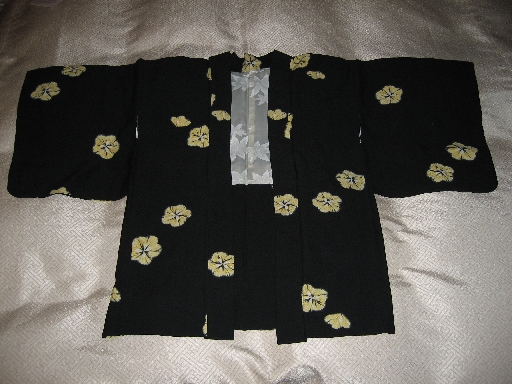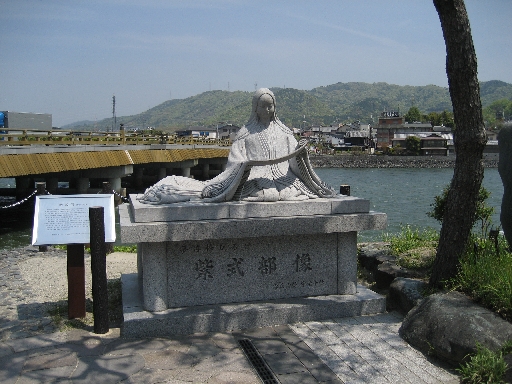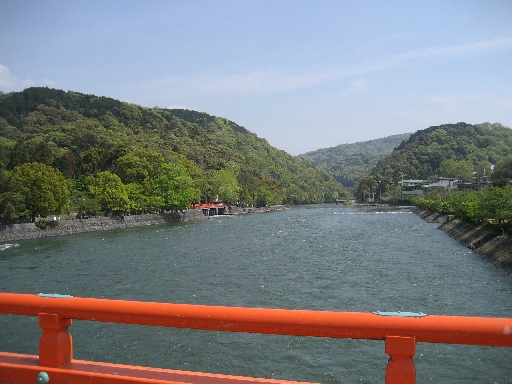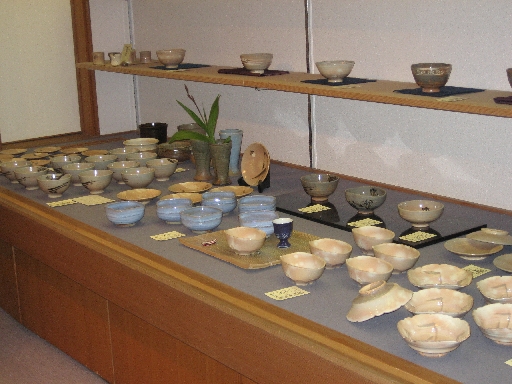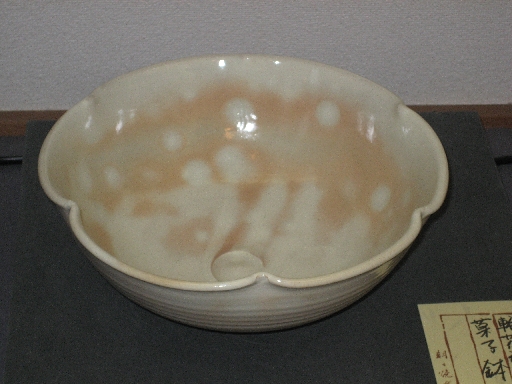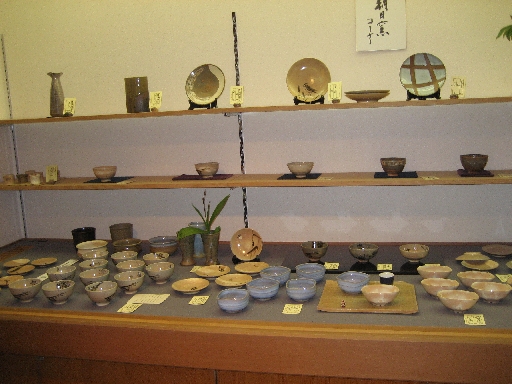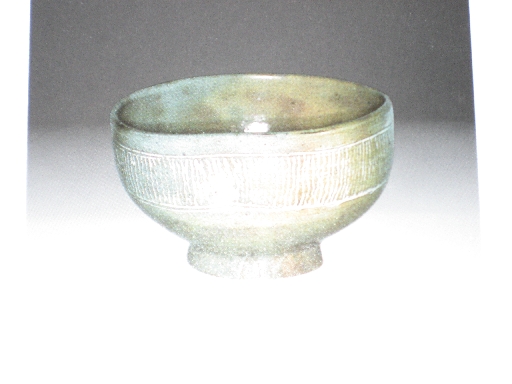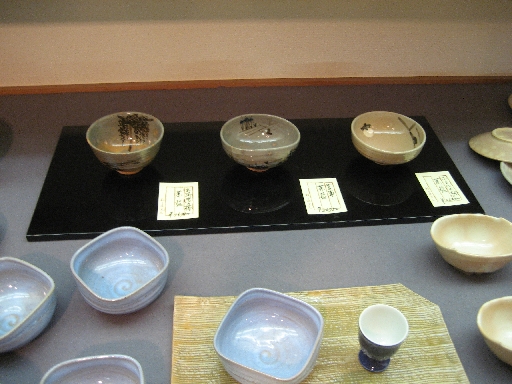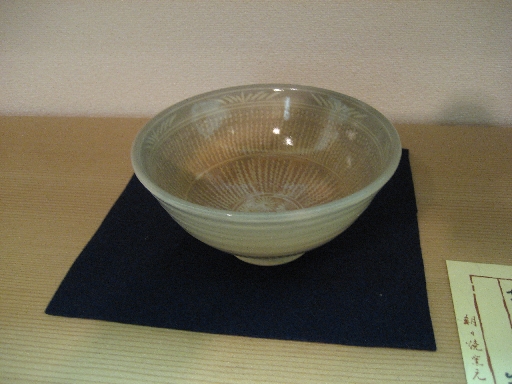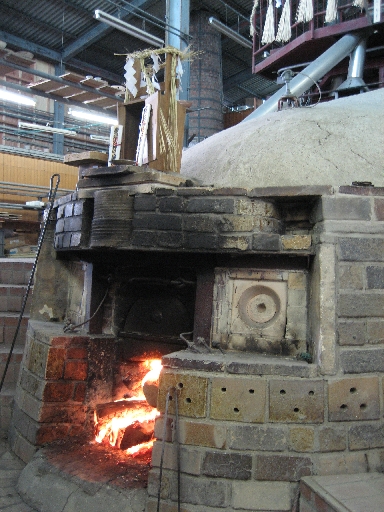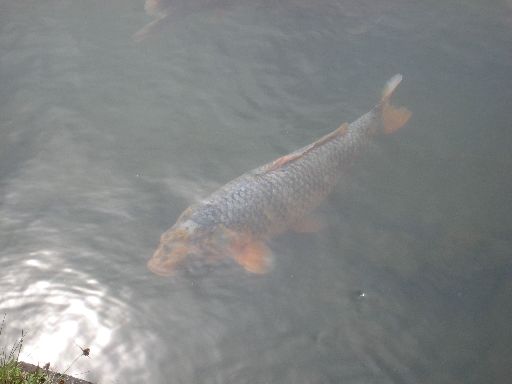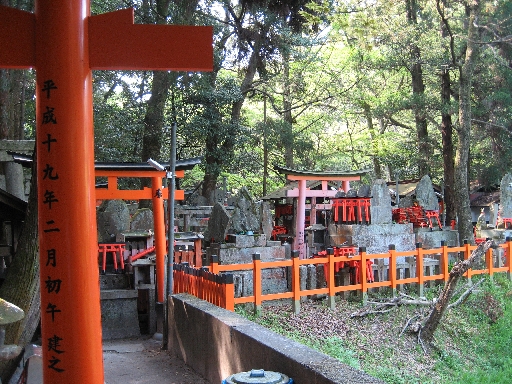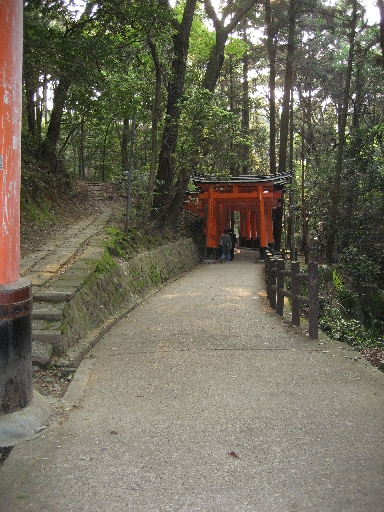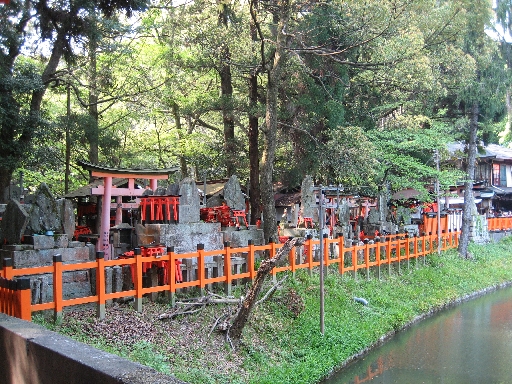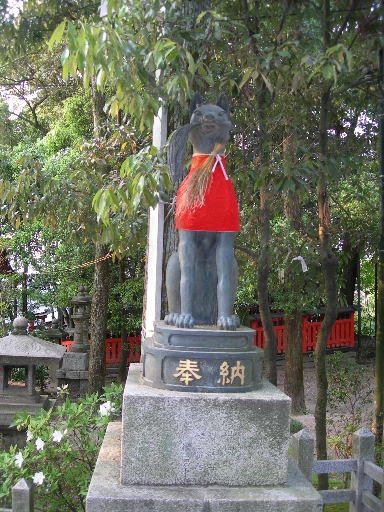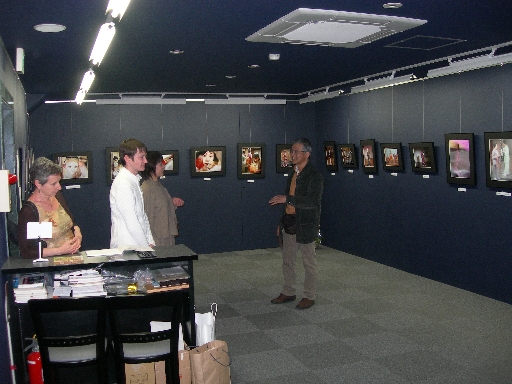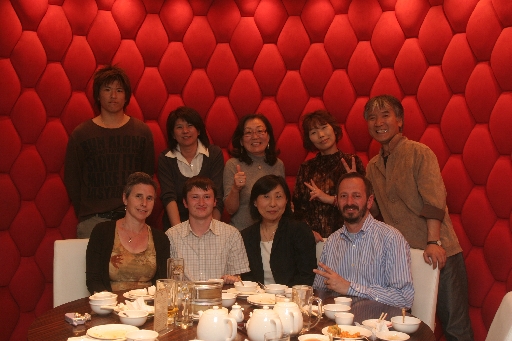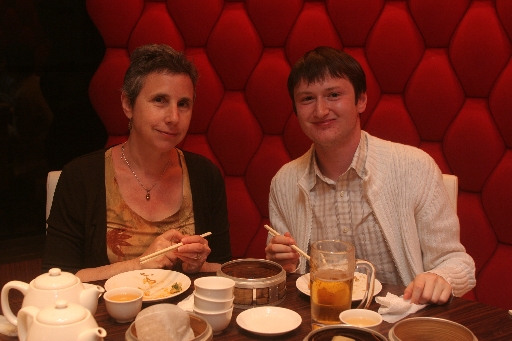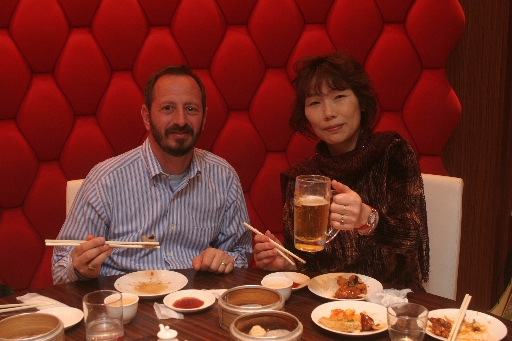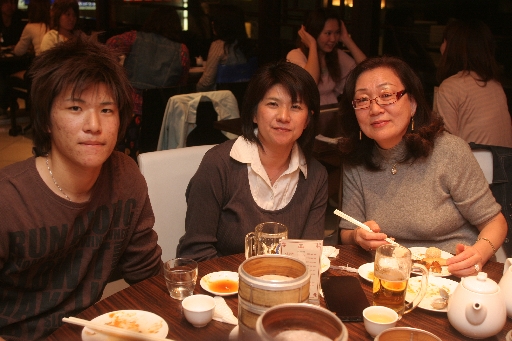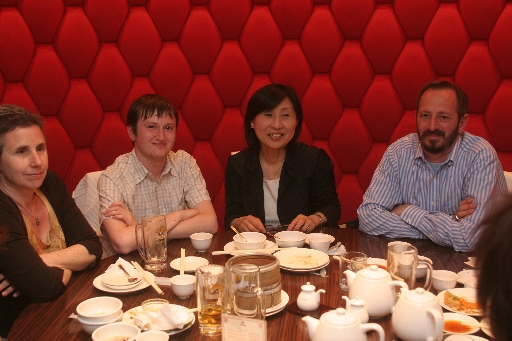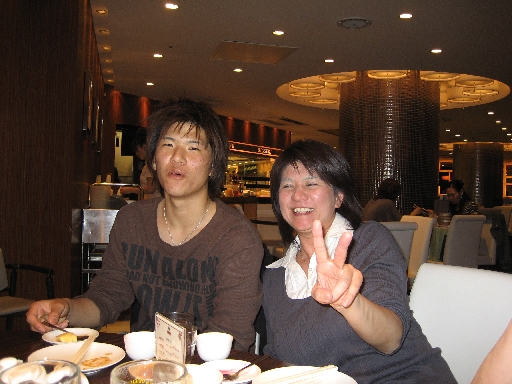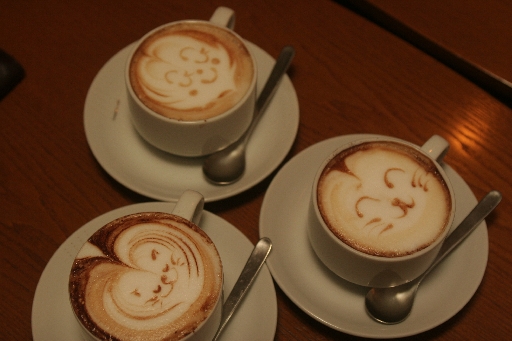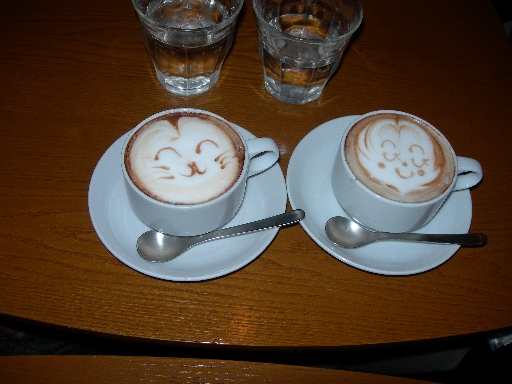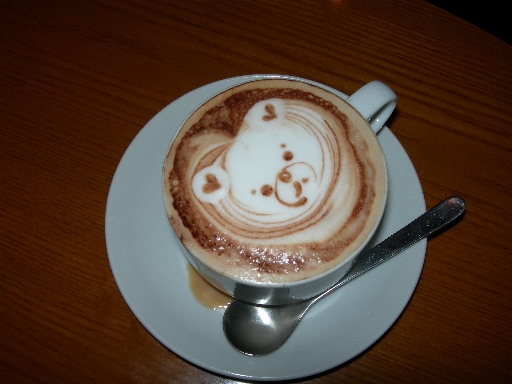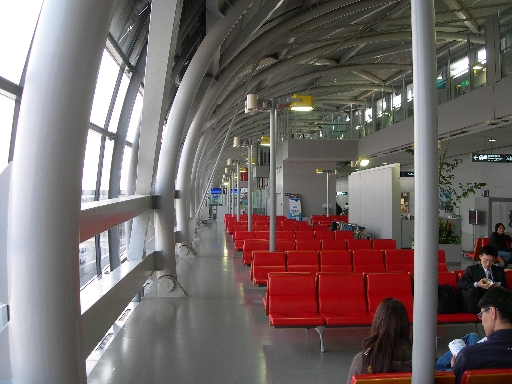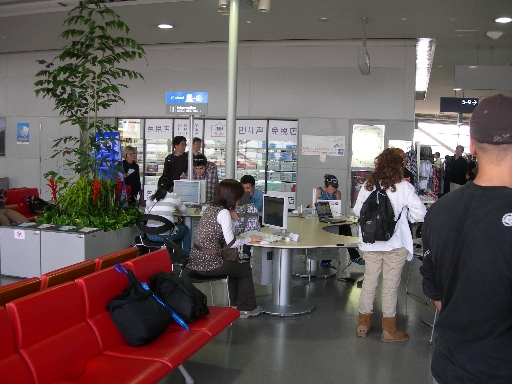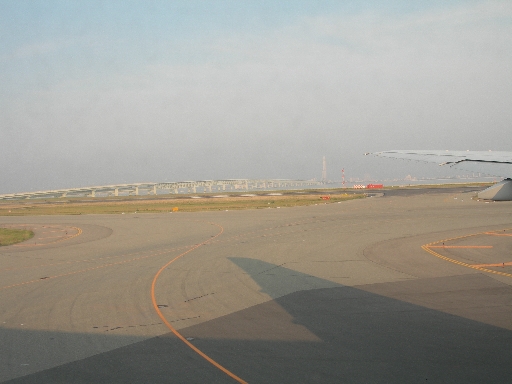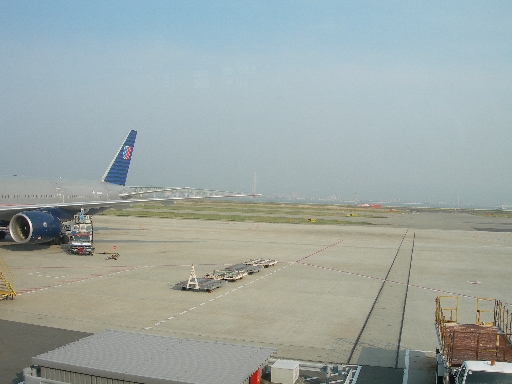| Story Kyoto2008 created by Michael Newman |
Polly and Mike visited Brett and his Japanese family in Kyoto.
|
Polly and Mike stayed in this hotel. The view is from diagonally across the street and a corner of the Imperial Palace grounds.
Breakfast was purchased at a small grocery aroud the corner and eaten in the room. A hot water boiler was available to make tea and noodles.
It is said that the level of development of a culture can be gauged by the sophistication of it's plumbing. This mirror was heated to keep condensation from forming.
The toilet required an instruction manual, some of which is printed on the seat in Japanese. The three lower buttons control washing water. Small rods protrde from the back implementing a bidet and a butt washer. The larger dark grey section controls water pressure for these washing functions. The next grey section controls temperature for the washing water and the temperature of the heated seat. The seat and cover incorported hydraulic damping so there are no nasty noises of the toilet seat or cover dropping. This truly shows the sophistication of the culture. These seats were common, not just in our fancy hotel.
Brett's primary means of transportation in Kyoto. Bicycle riding was shared by young and old as primary transport.
This is the Kitchen in Brett's apartment. Outside on the tiny balcony is a small washing machine and a rack for hanging clothing to dry.
Brett's bed is directly opposite the kitchen. You can't quite stir a pot from the bed.
Next to the bed was a small desk and the clothes closet. You can see the edge of the kitchen from here. To the right of the kitchen is a small bathroom and the entrance. Total space about 15 by 15 feet.
This interesting building was a few doors down from our hotel. We were told it was a religous building but it was never quite clear what the religion was or what the purpose of the big concrete dish on top is.
People write wishes on the back of these ornaments and hang them in shrines. We saw this horse in a shrine at the entrance to the Imperial Palace grounds and for the rest of the trip checked each shrine trying to buy some to take home. On our last day we found a similar horse, bought three and brought them home for gifts. Each was blessed by the monk at the shrine before he would let us take them away.
The Imperial Palace and grounds were across the street from the hotel. 27 acres of park with this palace in the center. It is about a 20 minute walk from the hotel to this side gate of the palace.
We were told that this building was a treasure house.
This side gate is used by Imperial family members. It shows the roof construction that is used on major buildings.
These roofs last about 20 years. This one is in it's last stages and is due for replacement next year.
Detail of how the roof is constructed from tree bark.
The tour of the Imperial palace was conducted for Foreign Guests Only at this time and was given entirely in English. This is our guide.
The nicer garden in the emperors private garden shown in these pictures.
The little boats floating on the river contained glasses of Sake. Writing good poetry entitled you to capture one.
Mike, Polly and Marie Kanari outside their house where a feast for us was being prepared. Marie stayed home while Kanari-papa-san took Polly, Brett and Mike to the local shrine.
This horse was at Kanari-san's neighborhood shrine.
Hunting for horses on the message plaques.
Mike's gift from Kanari papa-san one that shows what it will soon look like next to it
Kanari-san is explaining how the paper is made that will eventually be covered in laquer and become a piece like the plate. This half of the studio is used for fabrication of the pieces. The opposite side for painting.
Dyes for laquer.
The thin pieces are made by putting paper on a mold. The leaf plate shown was originally pulled from the mold at the left. The molds are only good for a small number of pieces.
More gifts for Polly and Mike.
Food preparation occured here. The main gas was off at this house. The small stove shown here, a rice cooker and the small fryer were the only cooking devices.
Brett is family and was allowed to help a little.
The feast at the Kanari's.
We admired the laquer painted on this small glass and were promply given another present.
The Orchids had tremendous blooms. Somehow they get them to send out three to six shoots all symmetric in both number of flowers and length.
Food was advertised with spectacular models. This particular sushi model was seen in a number of places and appears to have been massed produced. Most of the food models we saw were unique to the shop and were displayed outside to attract the interest of customers.
This food display was made entirely from fabric.
Food was packaged individually and often sold at a huge premium in single serving packages. 500 grams of yogurt sold for 168 yen on the same store shelf and rght next to a 125 gram package that sold for 158 yen.
Conveyer belt sushi is eaten as a fast food joint. The prices are fast food prices as well, about a dollar a plate.
These machines grind green tea into a fine powder.
These flower arbors smelled wonderful and attracted crowds of bees that were busy gathering pollen.
The stone at the rear top left is said to be the center (and heart) of Koyoto.
Inside this building is an antique climbing kiln, preserved by a pottery that felt much like Mudflat to me. The kiln was last fired in 1968 with firing discontinued because of air polution rules that controlled al of the soot and ask produced.
Although the kiln is never fired the space around it is used. This seating area is often used for small concerts and lectures.
This spirit lives in the Kiln.
Of even more archeological interest is this antique kiln.
While wandering we met Naomici Suehiro-san who is the President of Fujihira Pottery Co. Ltd. He guided us and then served tea warming to our vist and becomming a tremendous host.
Brett and the Sensei of his Japanese class.
Chelsea and Brett were in the same class. Her host family gave them flowers for the completion ceremony.
Brett's adoptive family in Japan includes these members of an English conversation group.
Graduating class.
Receiving a completion certificate and giving a few words of thanks.
T the end of the day here is what the students all came for. This is Brett's certificate of completion.
Takako Kanai met us and took us to lunch. This place is famous for preparing bean curd in may different ways.
These boats floated downriver and then were lifted off and trucked back upriver.
We walked about a mile to this shrine where the shoppin side street meets the main road just around the corner.
This lumber yard is locate in the middle of the bamboo 'forest'.
These boards and the three others fill to this point every month or two. The placards are then taken down and burned to release their Kami into the shrine.
The shrine is surrounded by bamboo groves and cedar forests.
It says Dragon. This picture was the tool we used to explain what Mike wanted for a stamp for the base of his pottery.
This man cared the new Dragon pots stamp in about an hour.
At Asahiyaki we found a wonderful collection of fine pottery. While there we happened to meet Eiko Matsubayashi-san who gave us a tour and showed us their climbing kiln which was being fired while we were there. Little did we know that she was a friend of Brett's adoptive mother Tei,
This one is photographed from a book. It is in the collection of the Boston MFA.
The fish were between two and three feet long.
The gallery space for the exhibition was small but very well done. The lighting for the work was superb. Museums should take a lesson from this.
Toward the end of the trip we hosted our Japanese friends for a Chinese dinner. Dim-sum and an all you can eat buffet were offered at this restaurant on the 7th floor of a department store.
After dinner we went out for coffee which was presented this way.
Free internet stations at the airport, along with free wireless network access. Unheard of in the US.
Other photos taken at the same time that these photos were taken can be found in the directories that these photos came from. The photos in this story came from the following directories:
Kyoto2008
|

